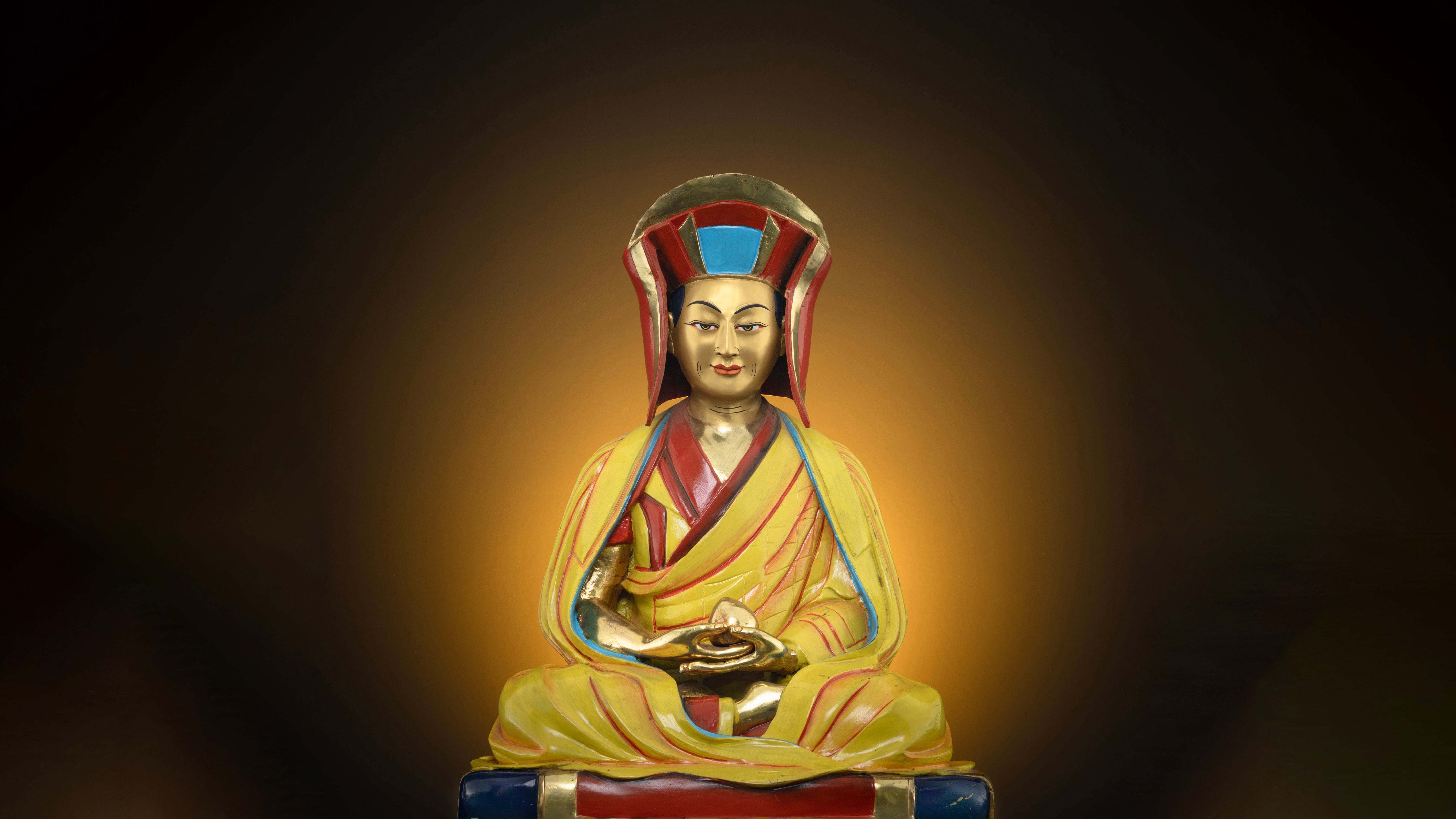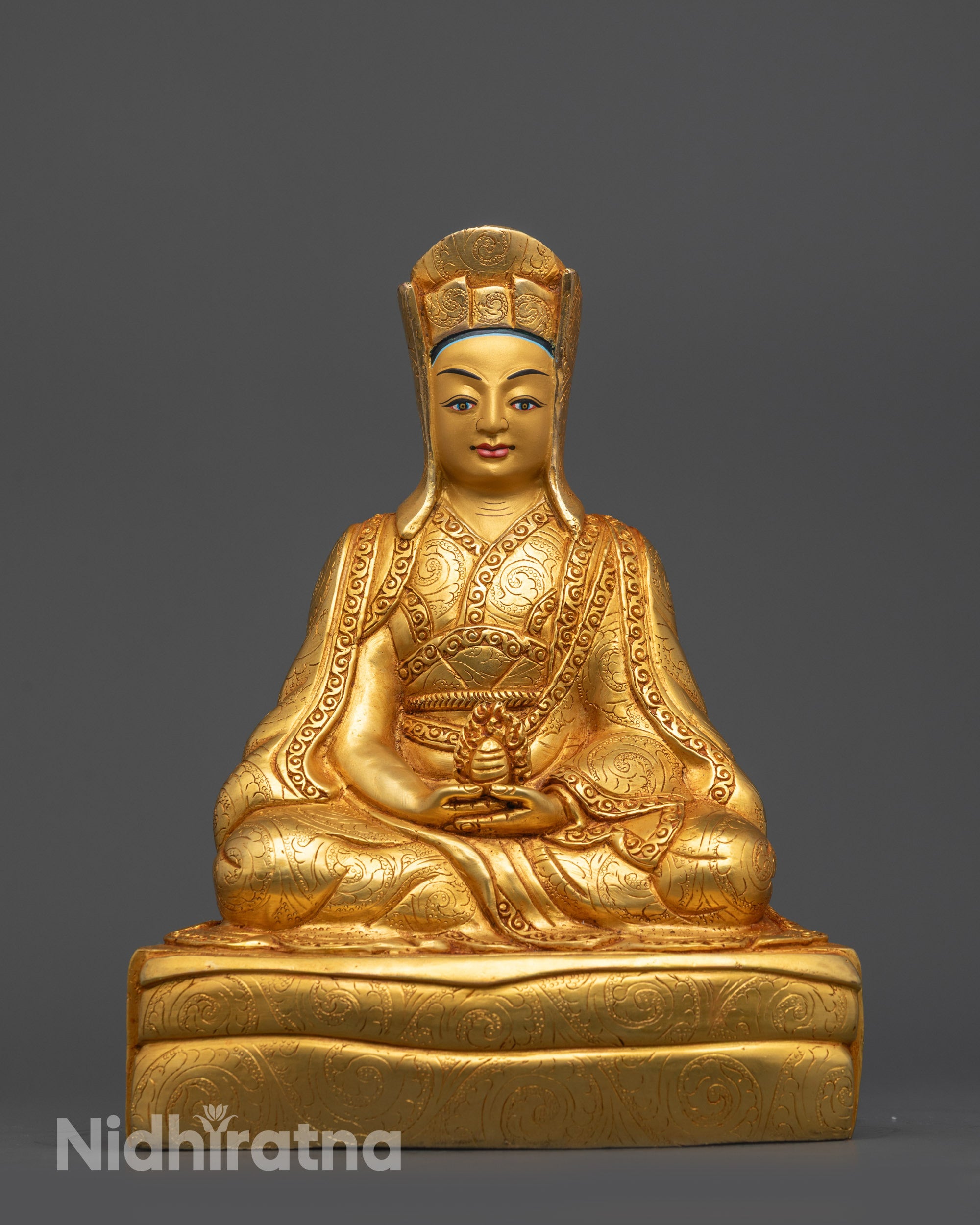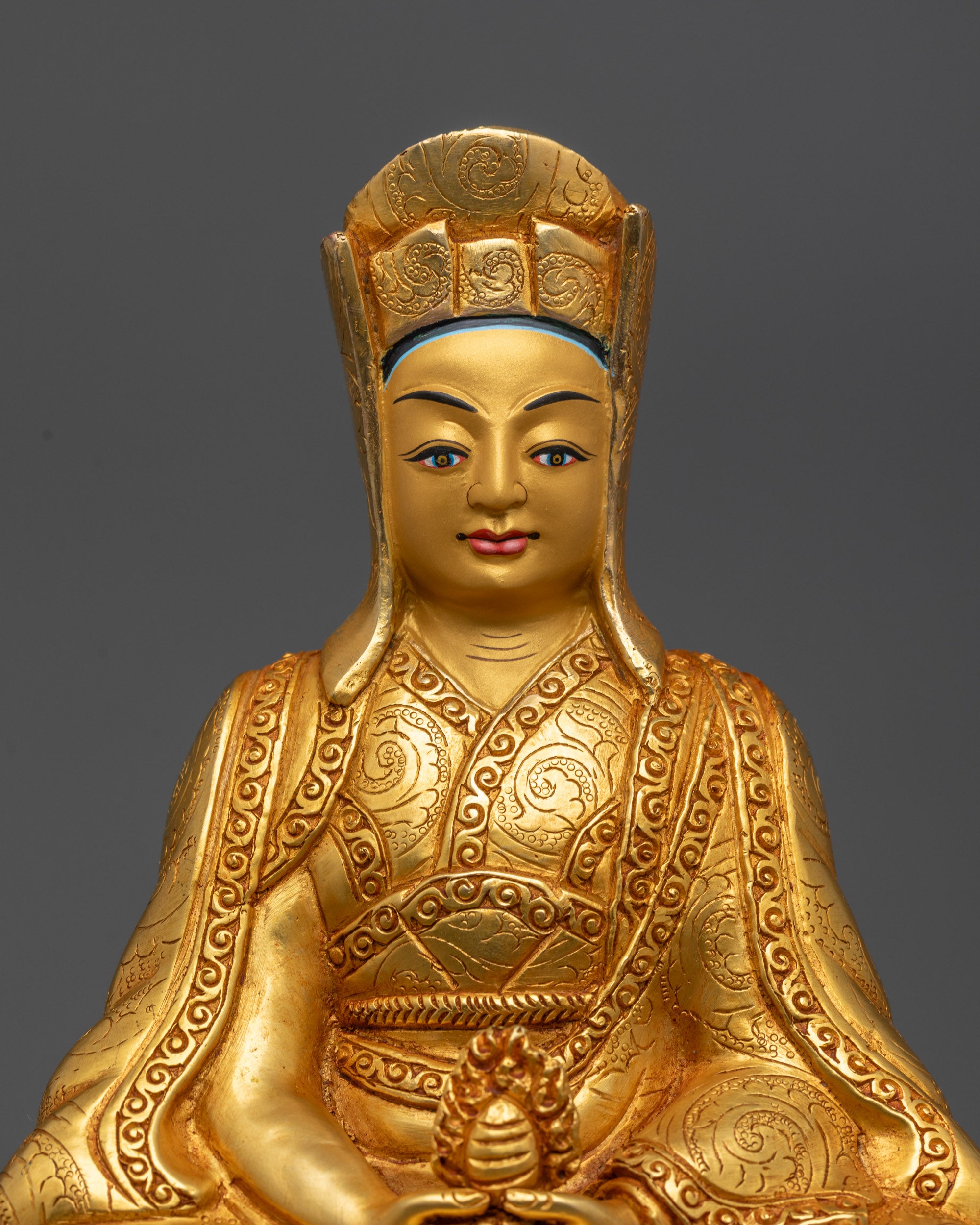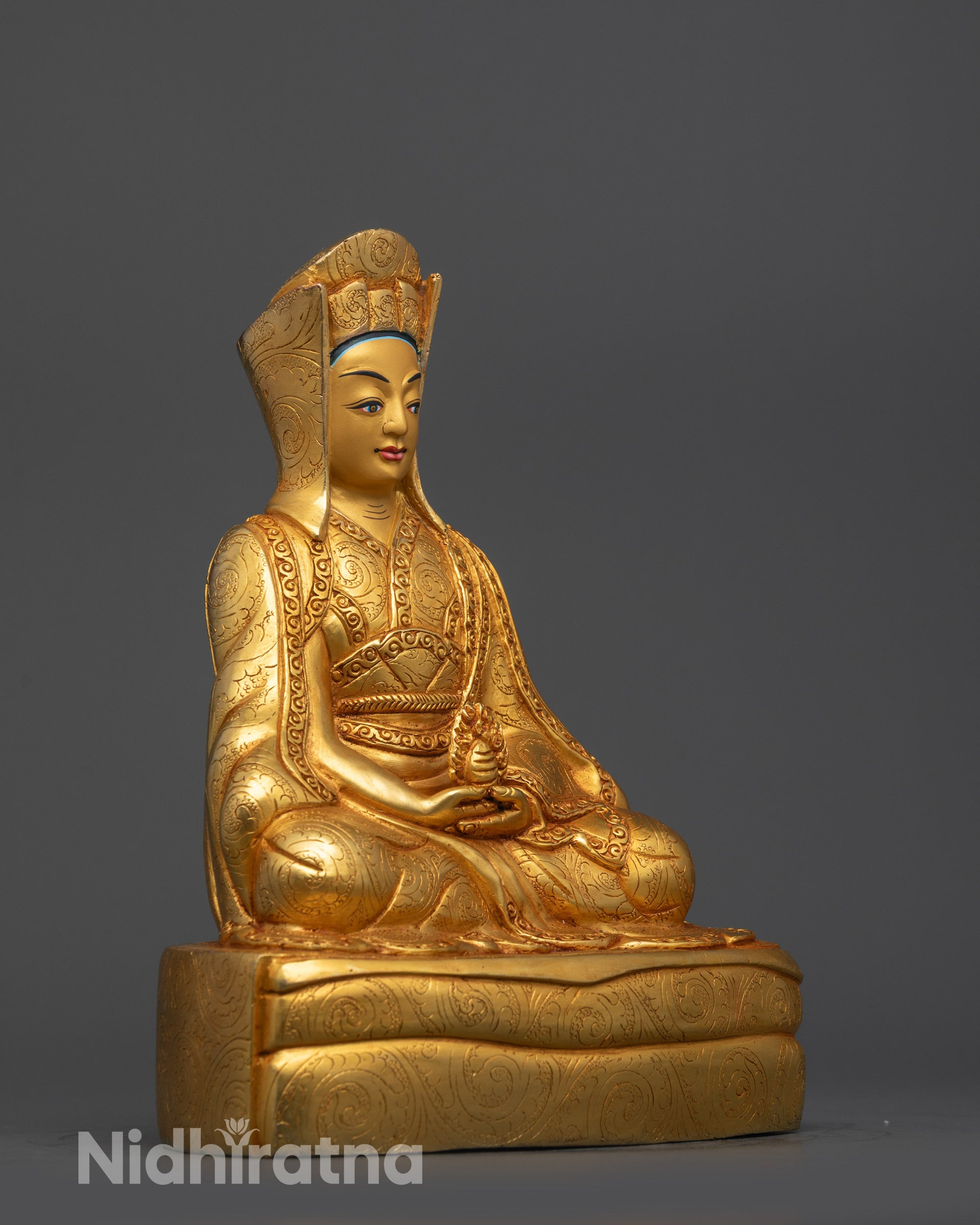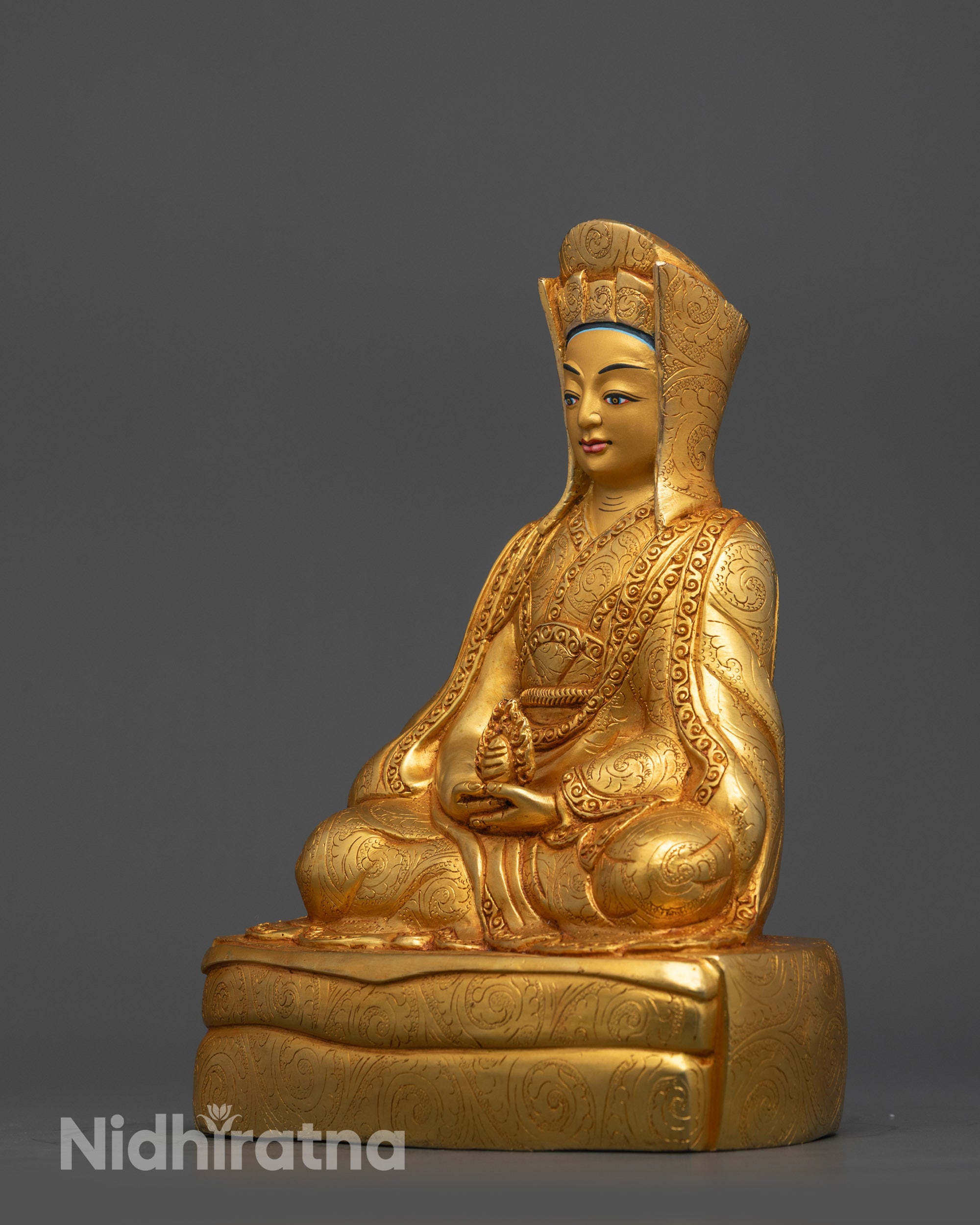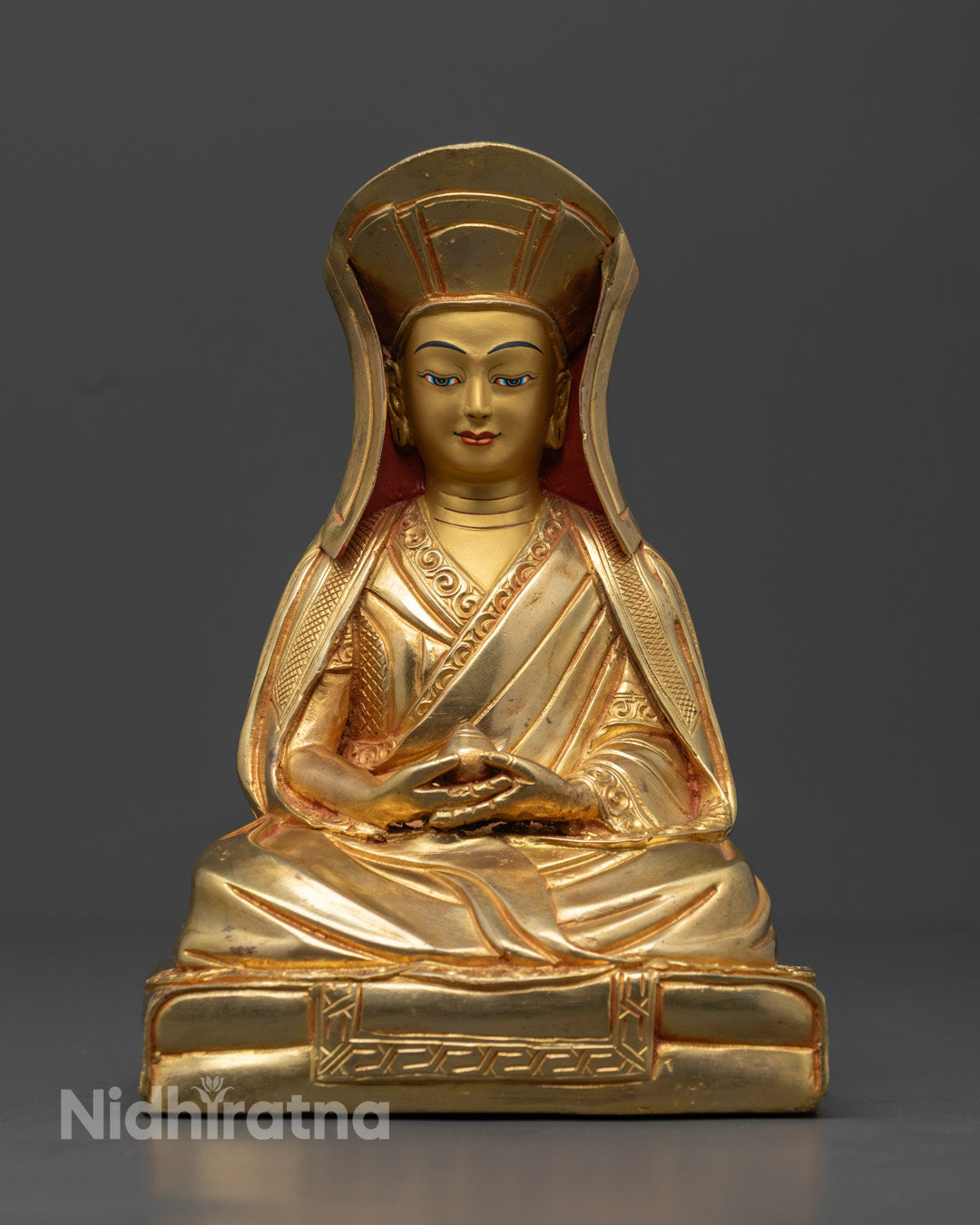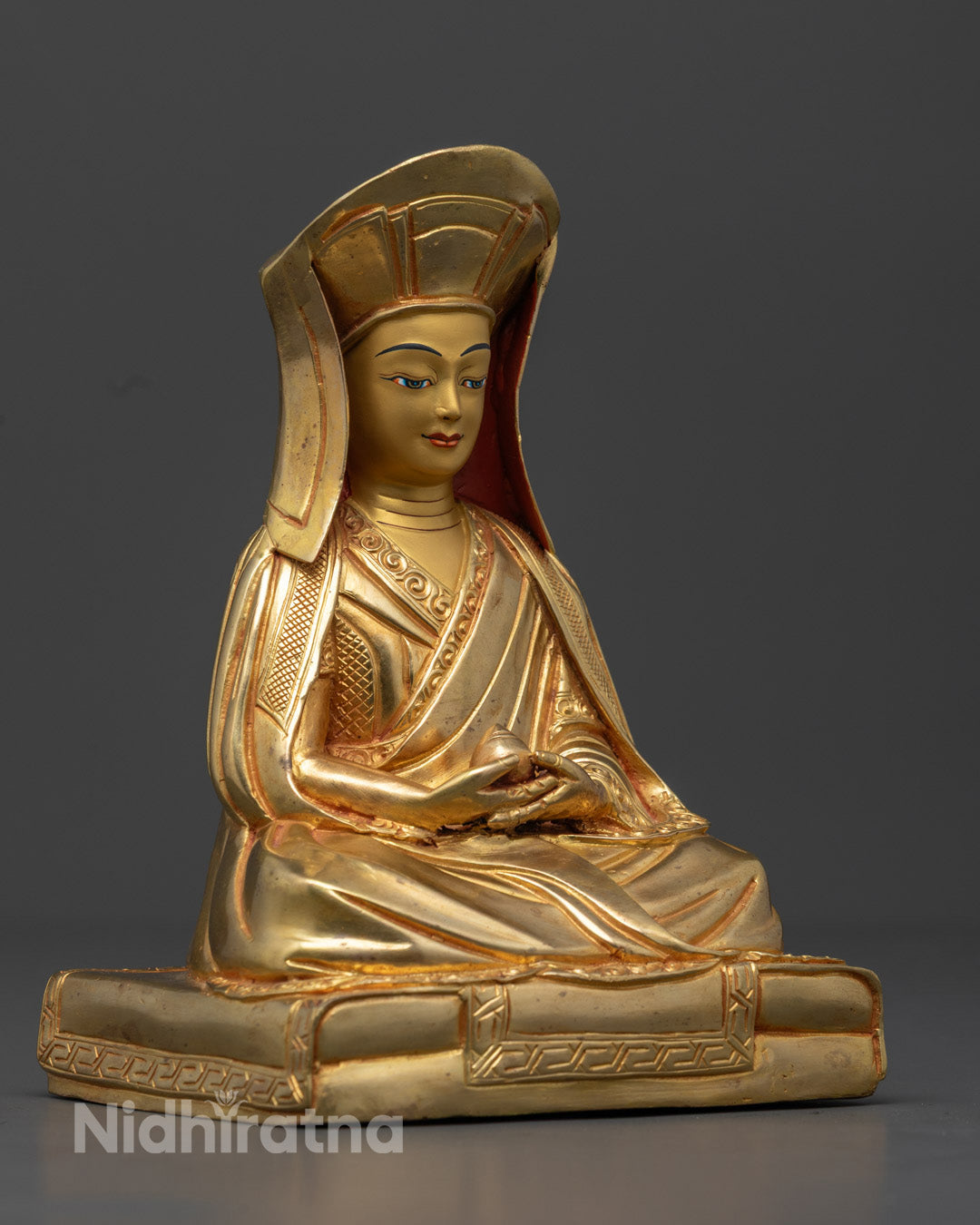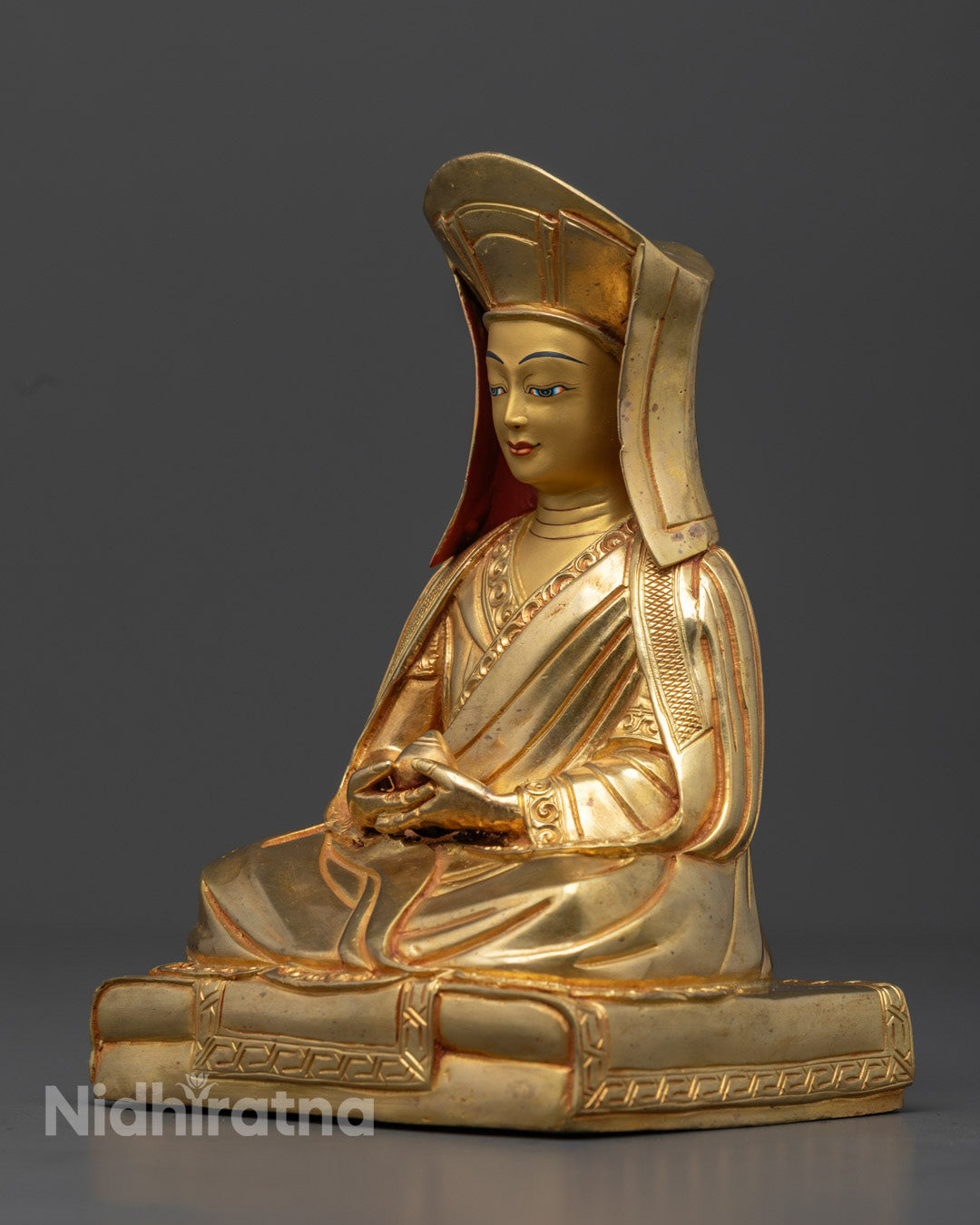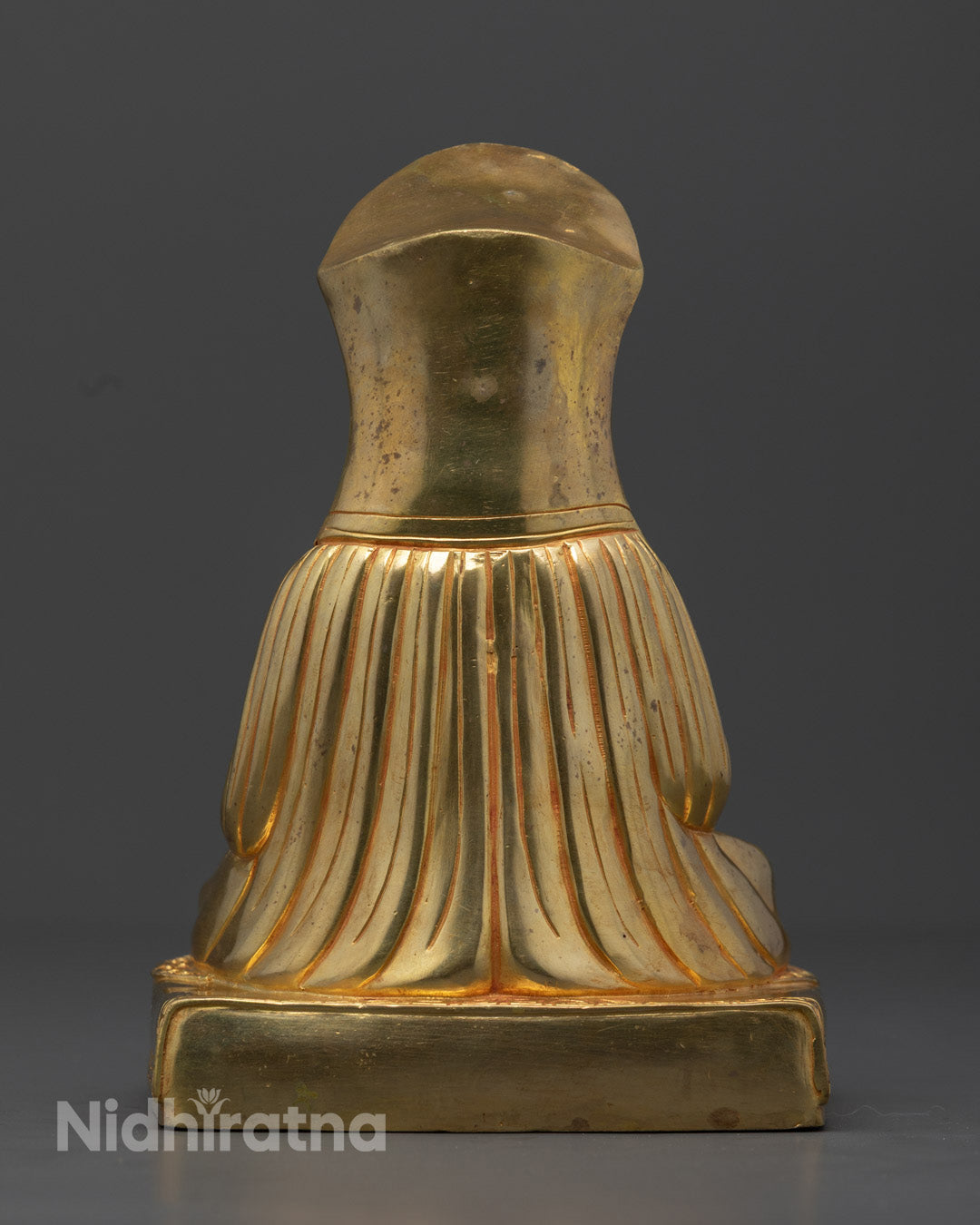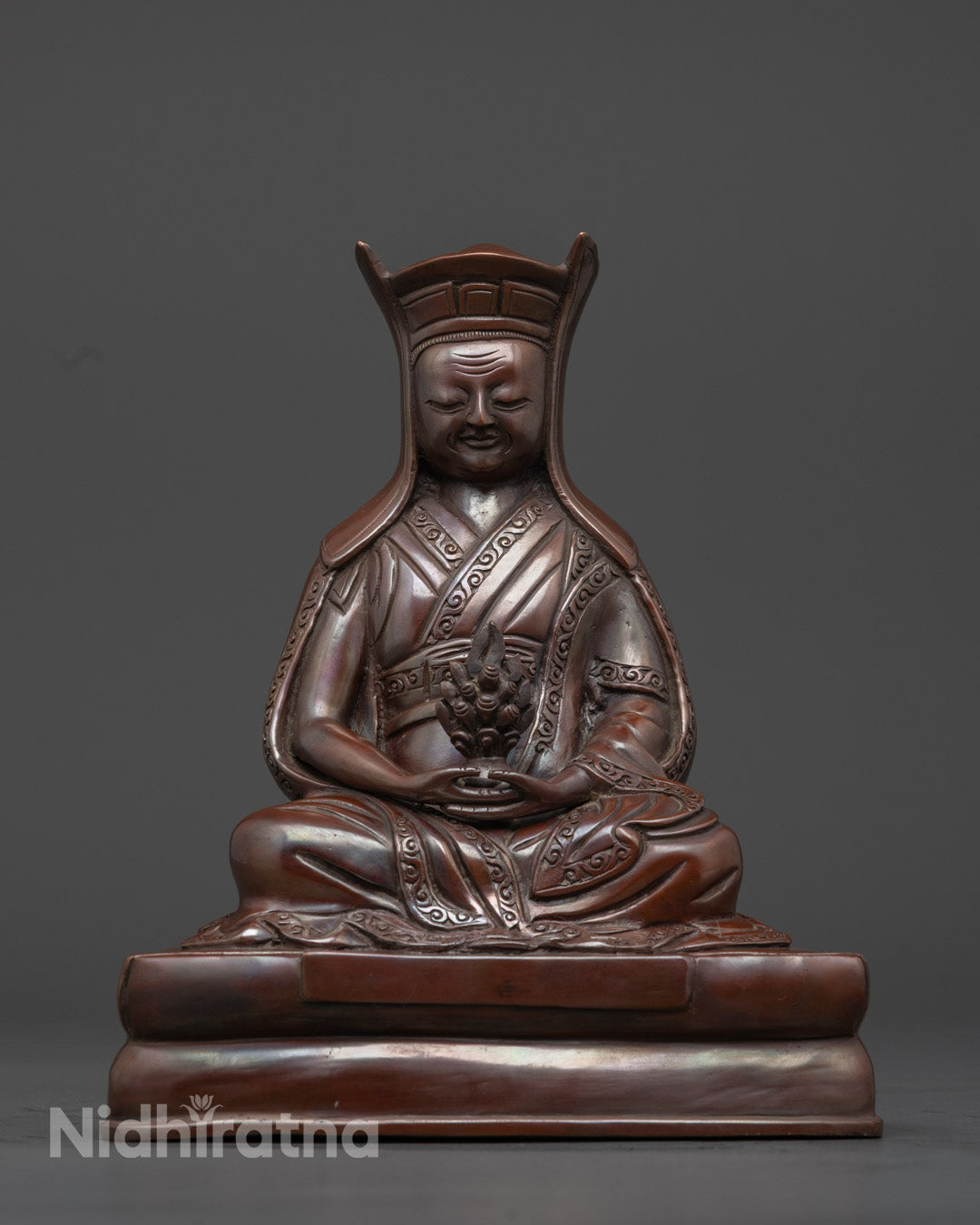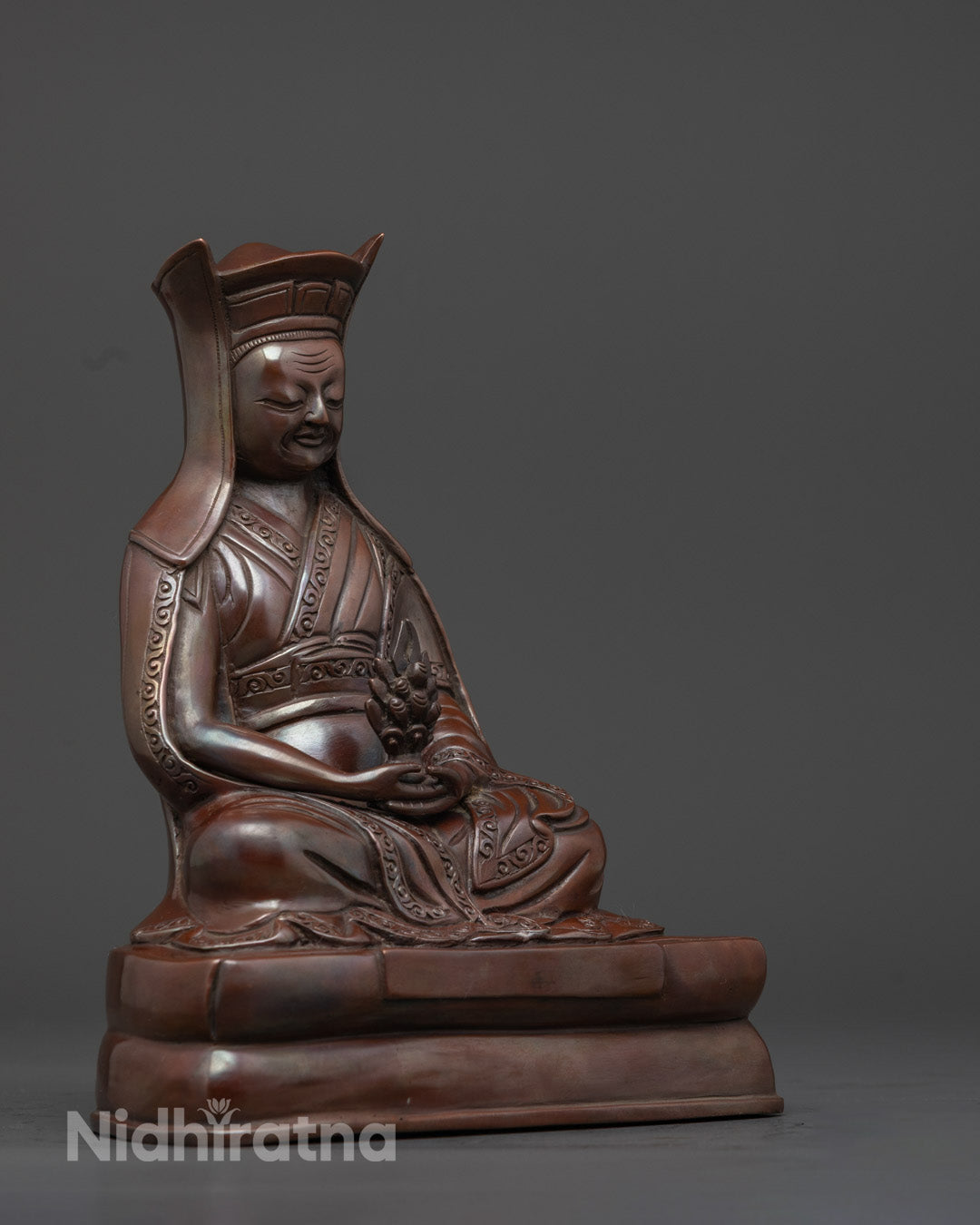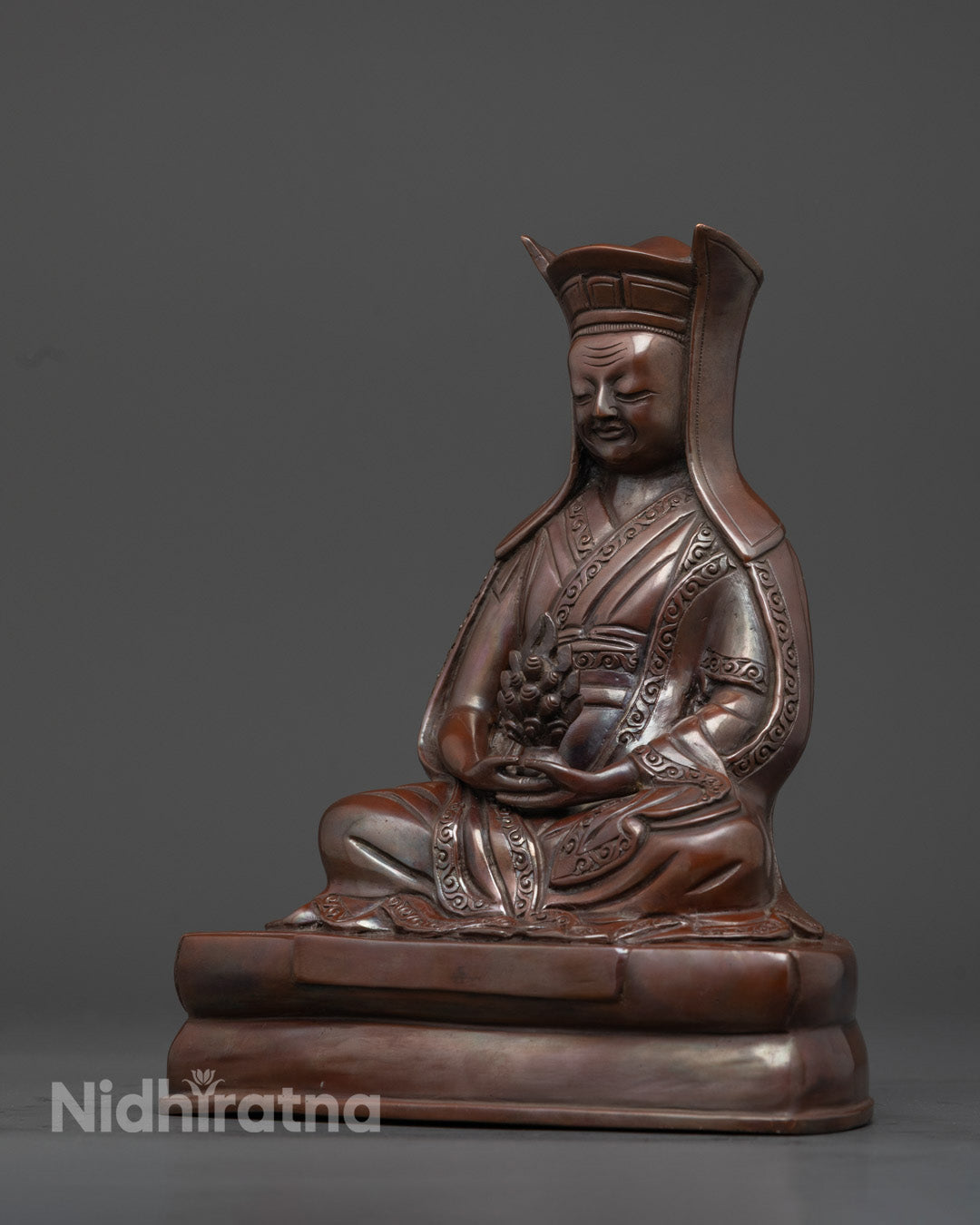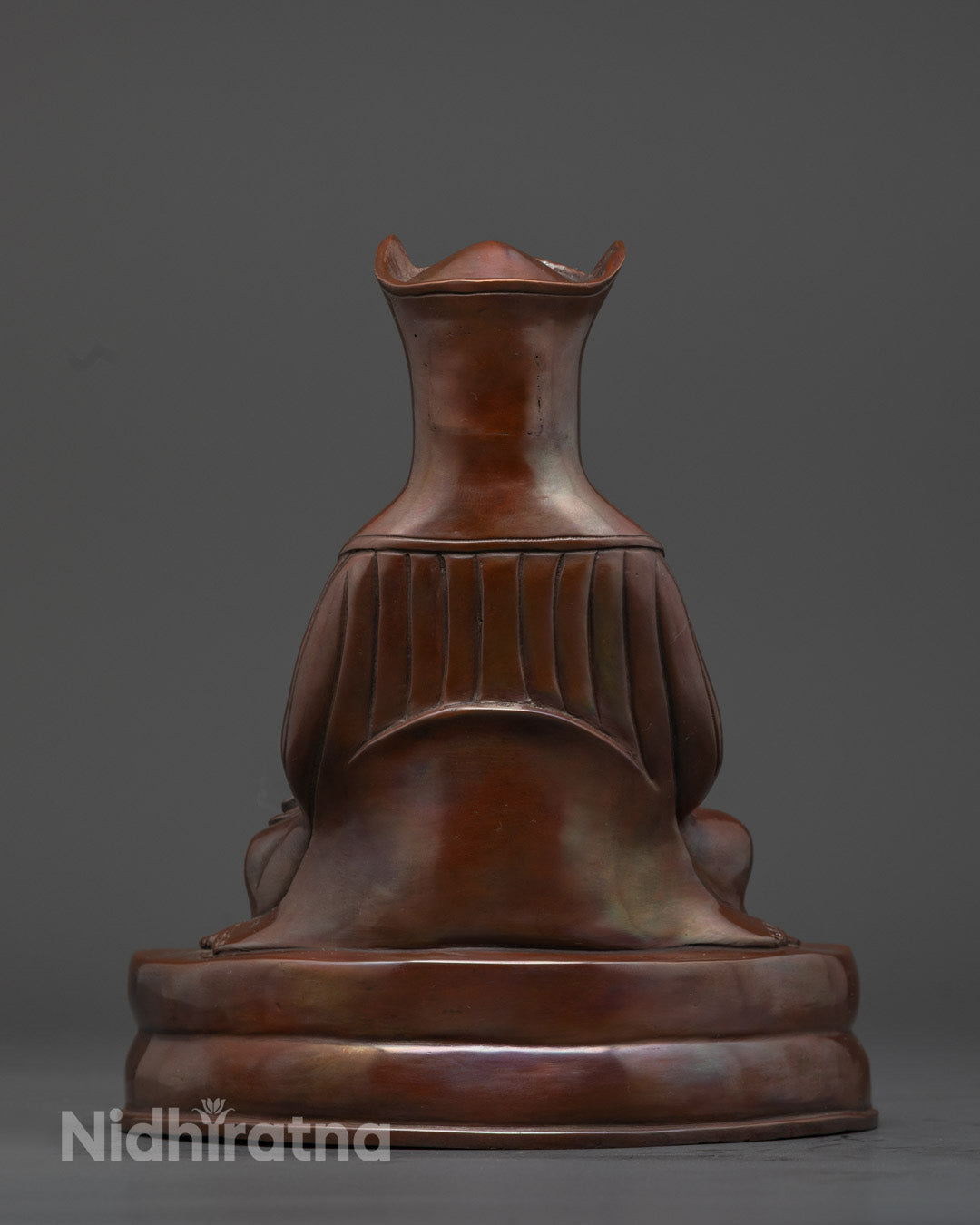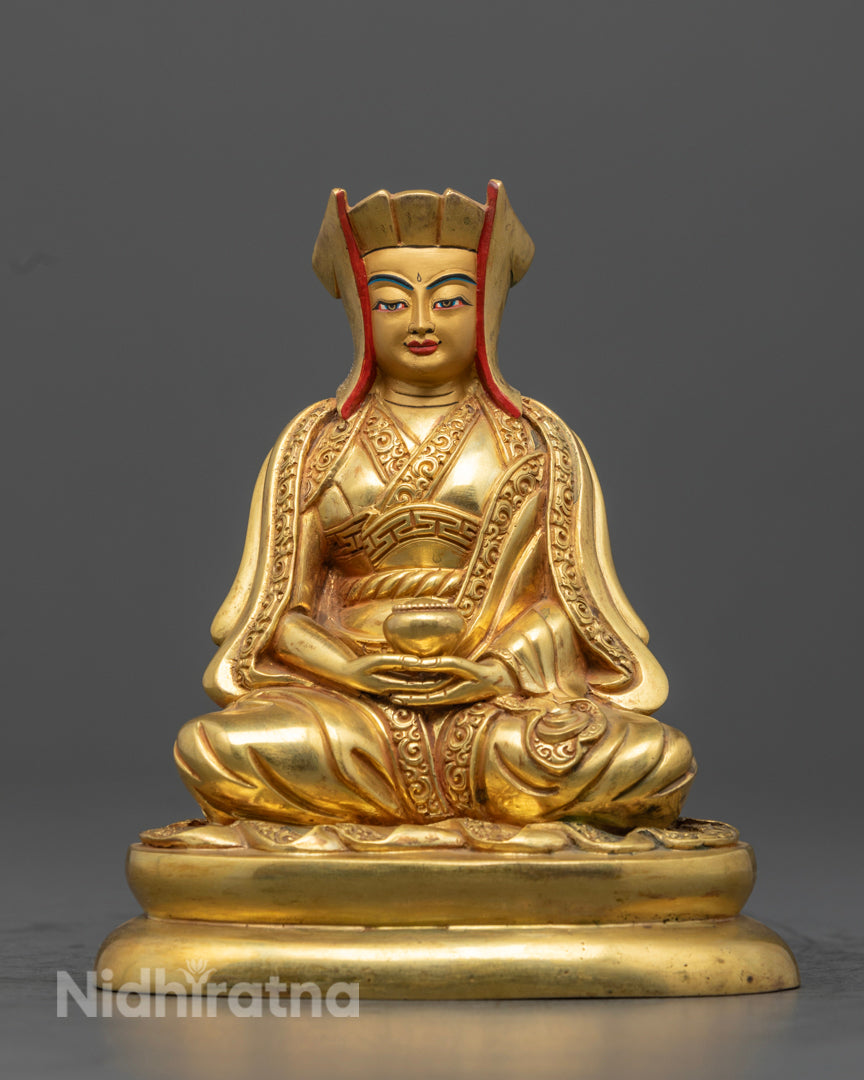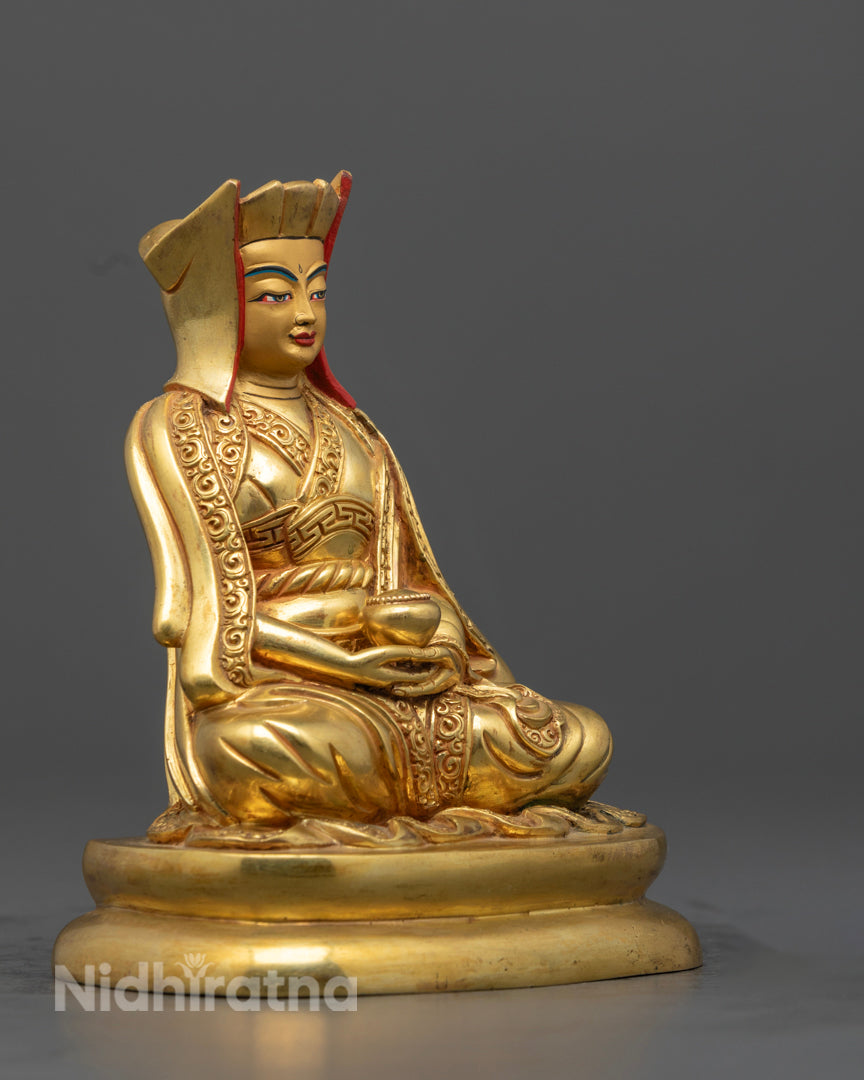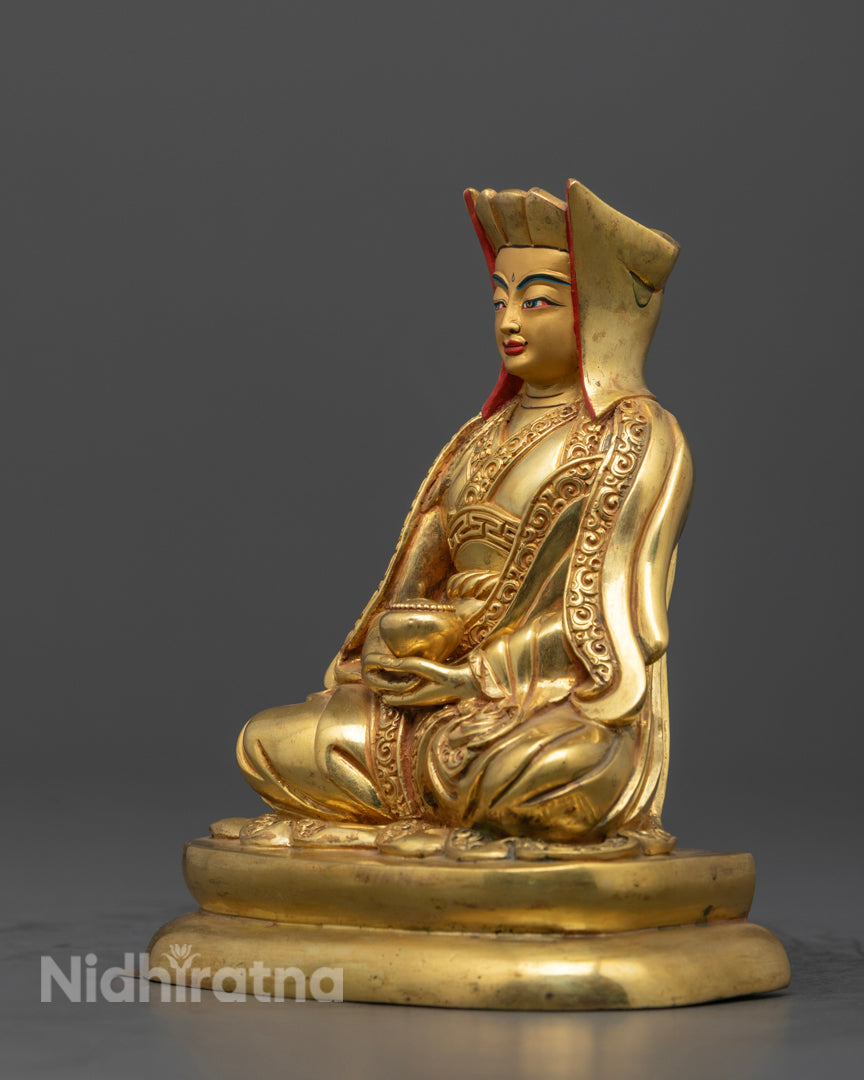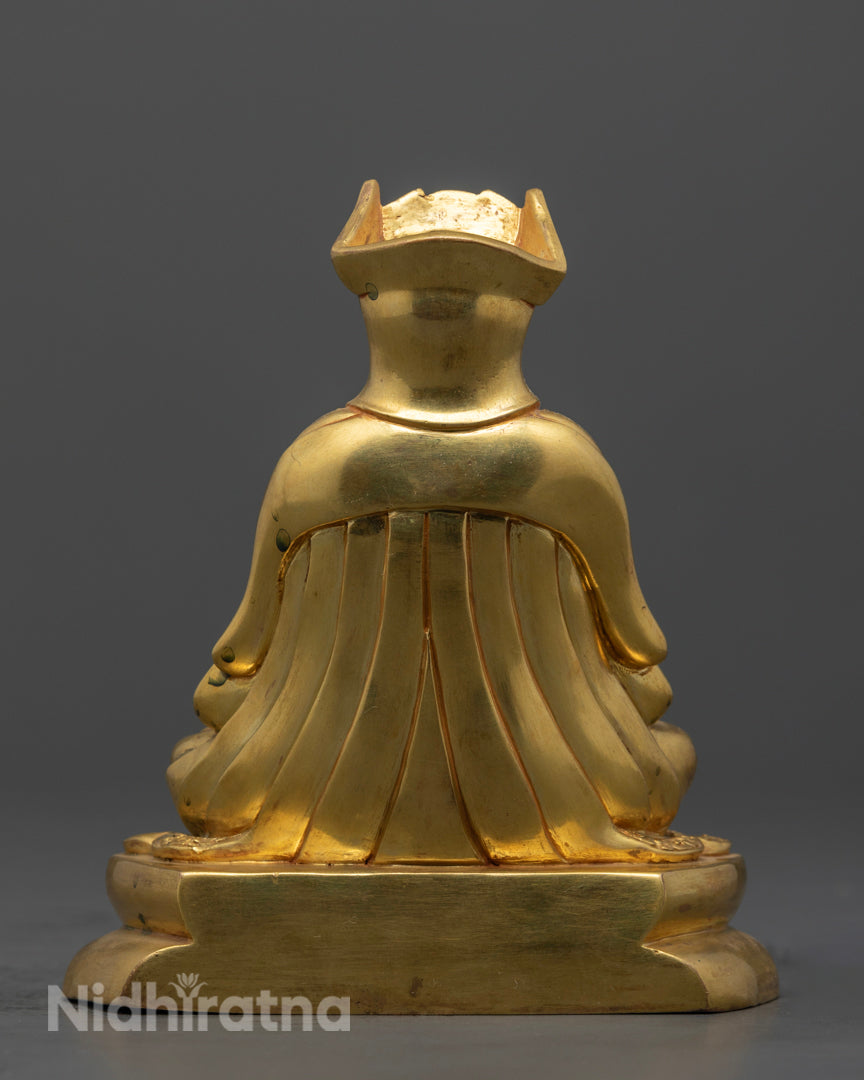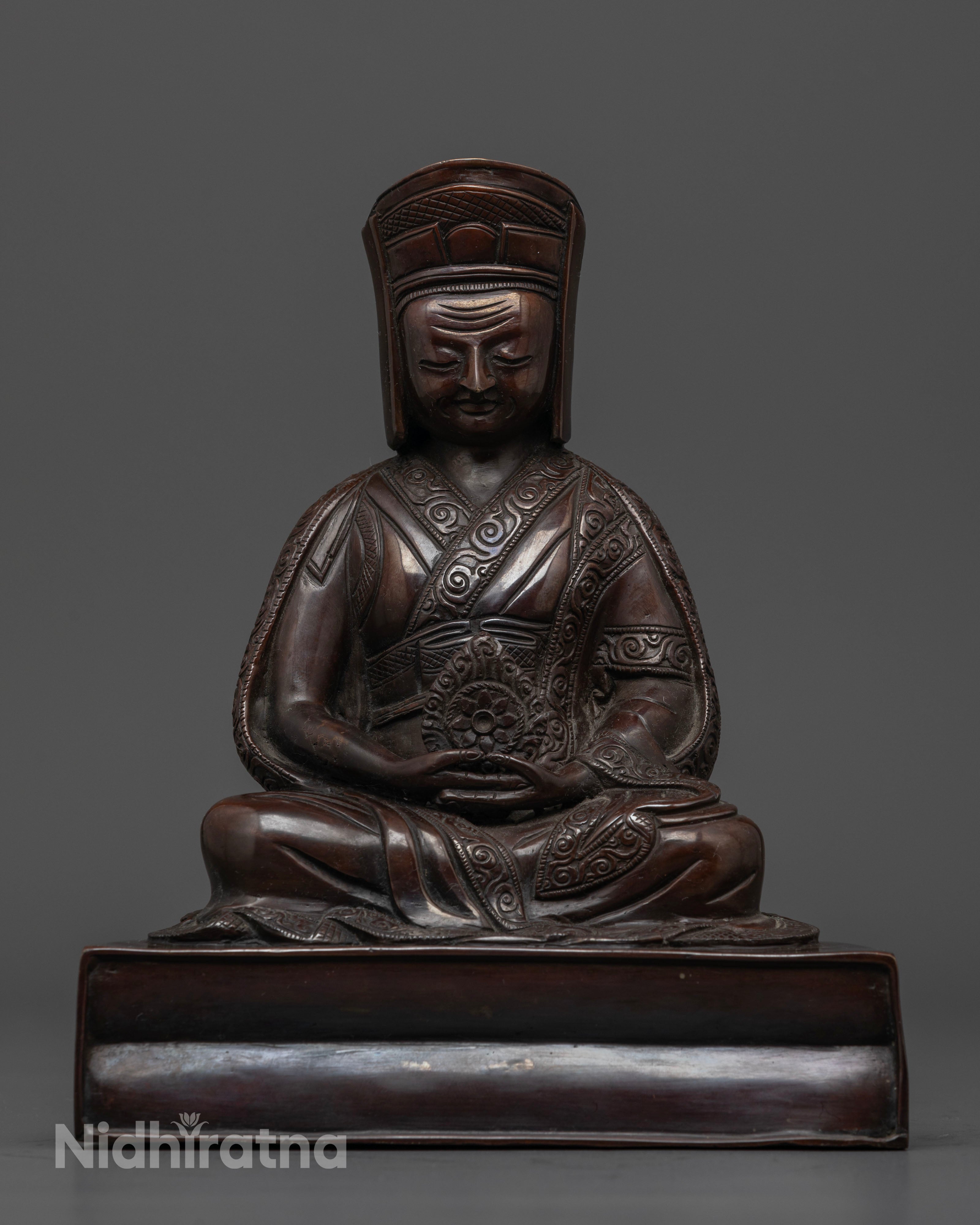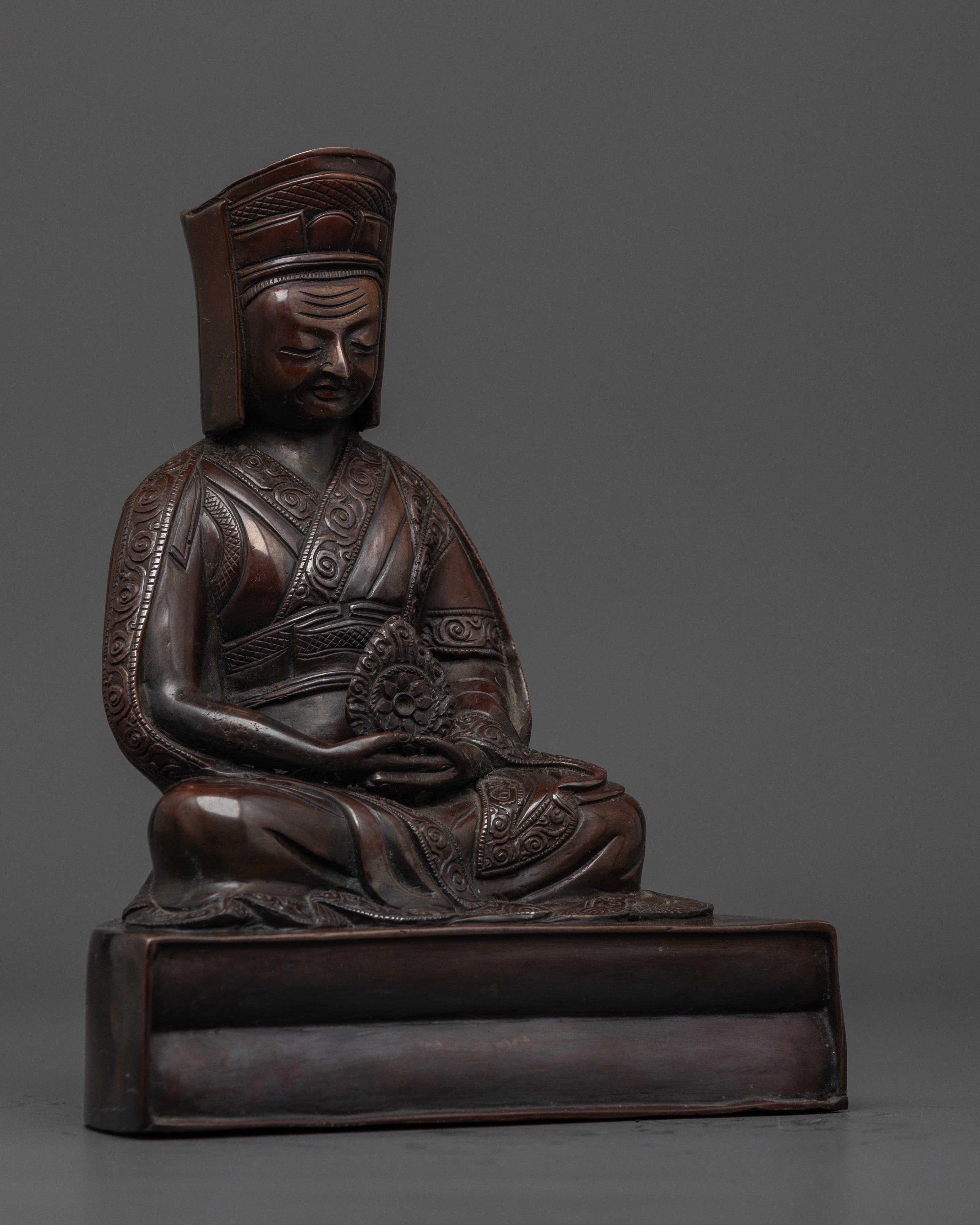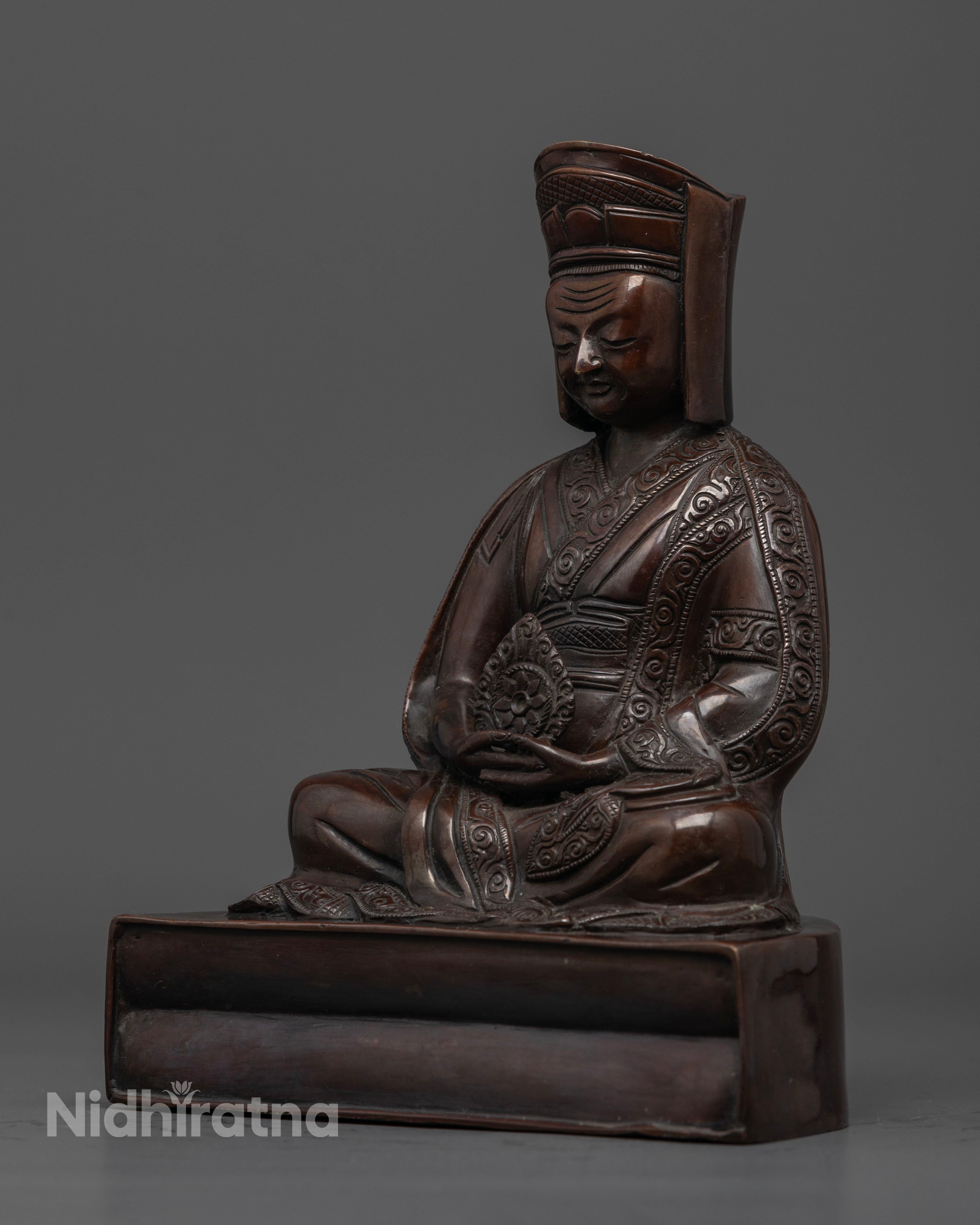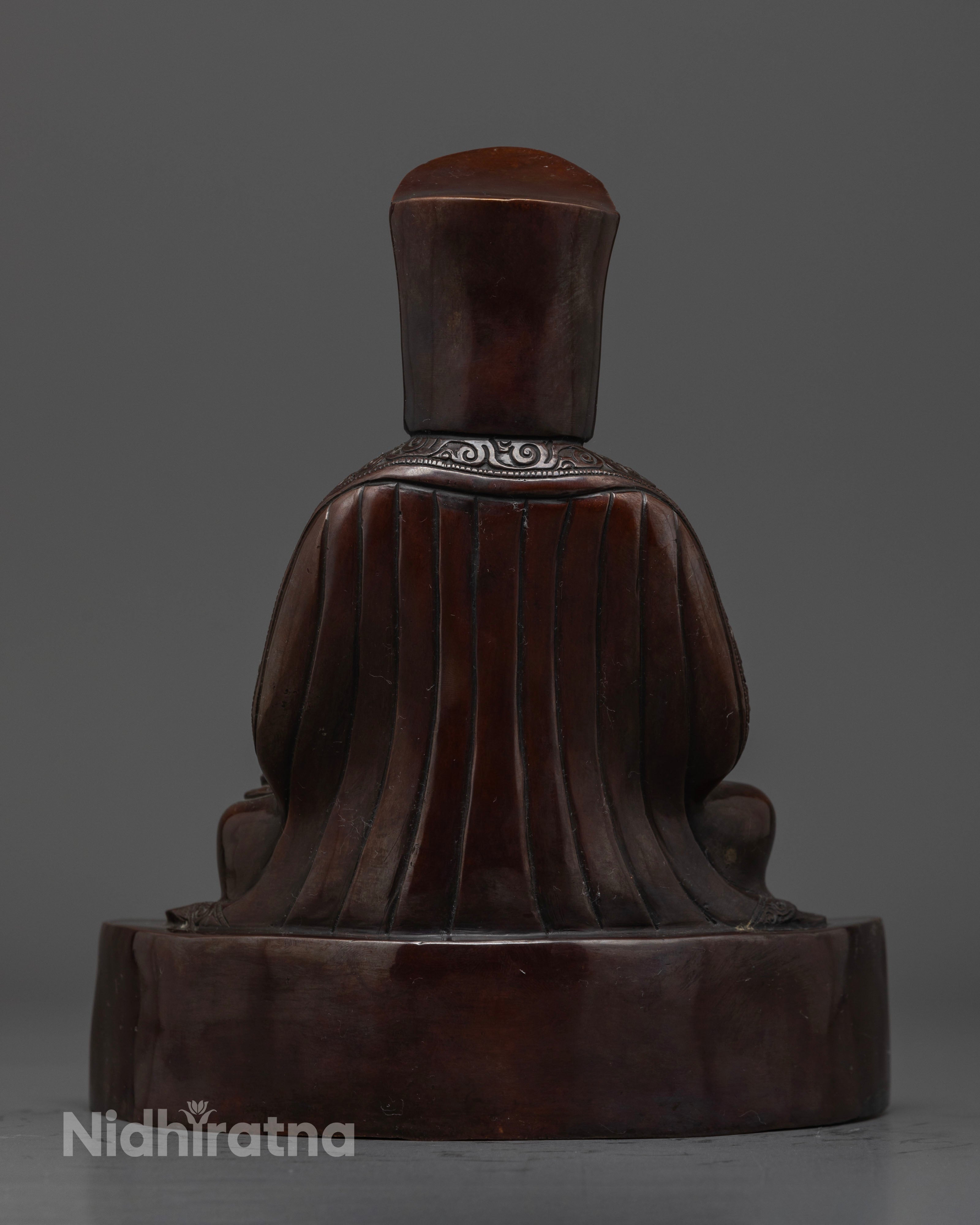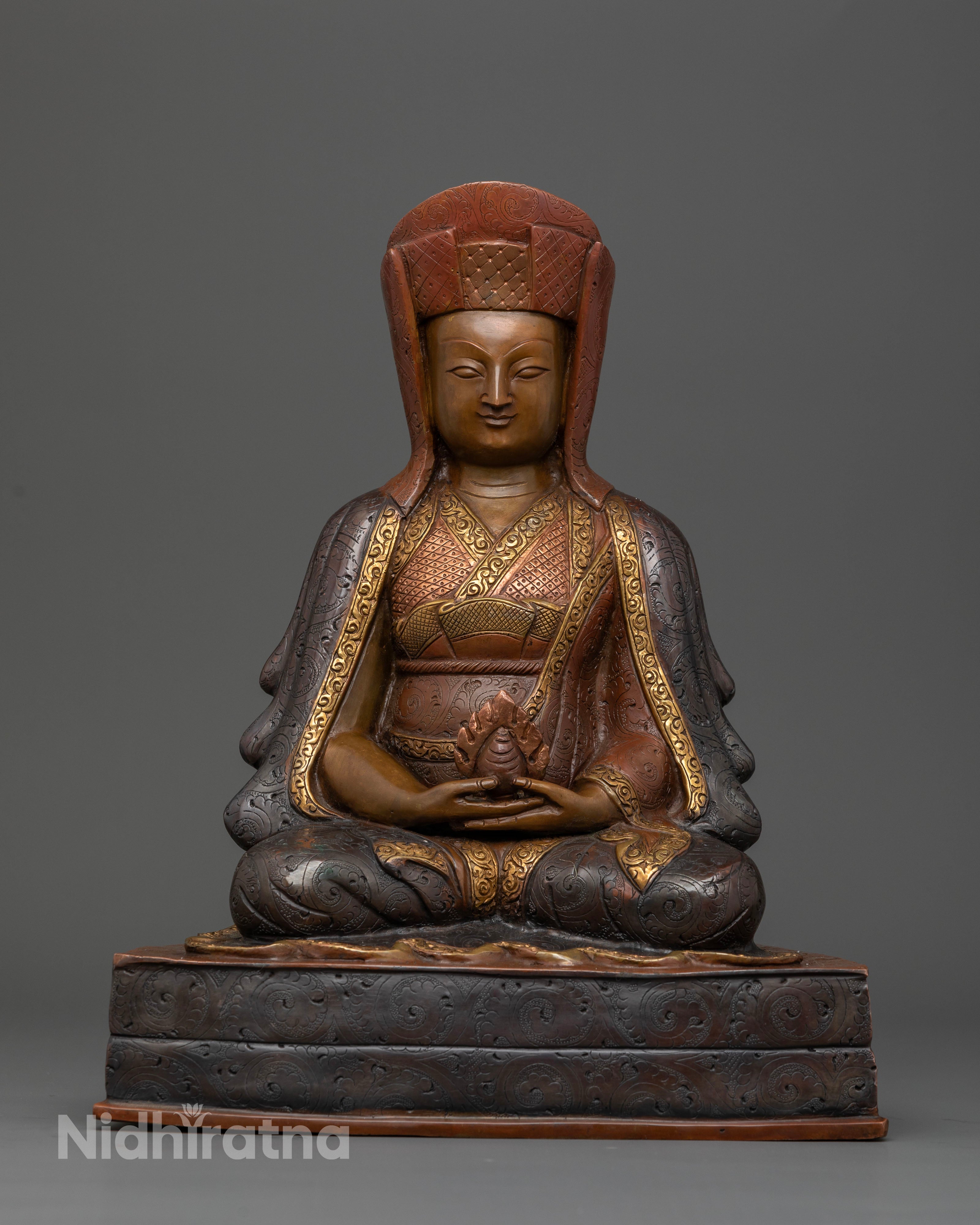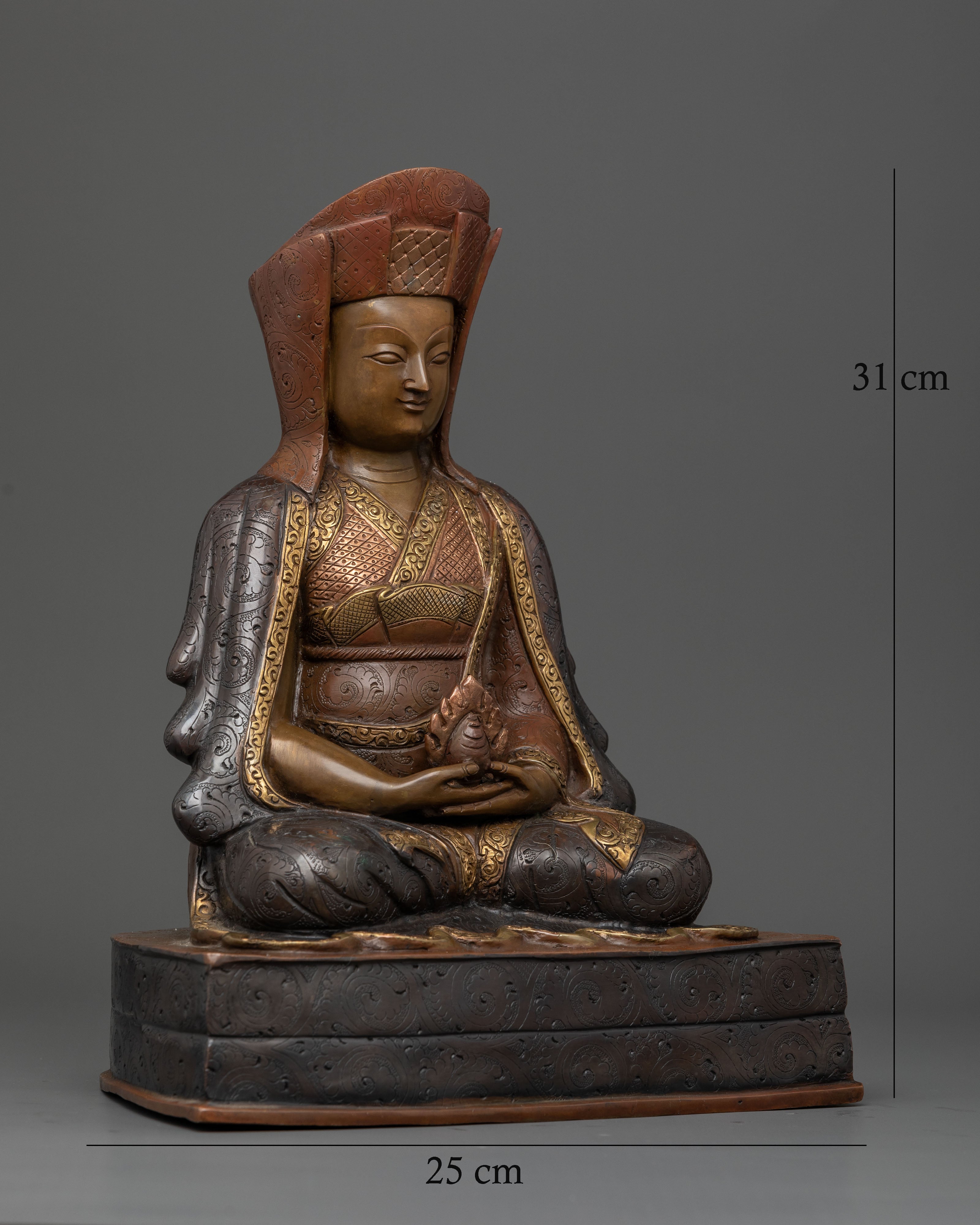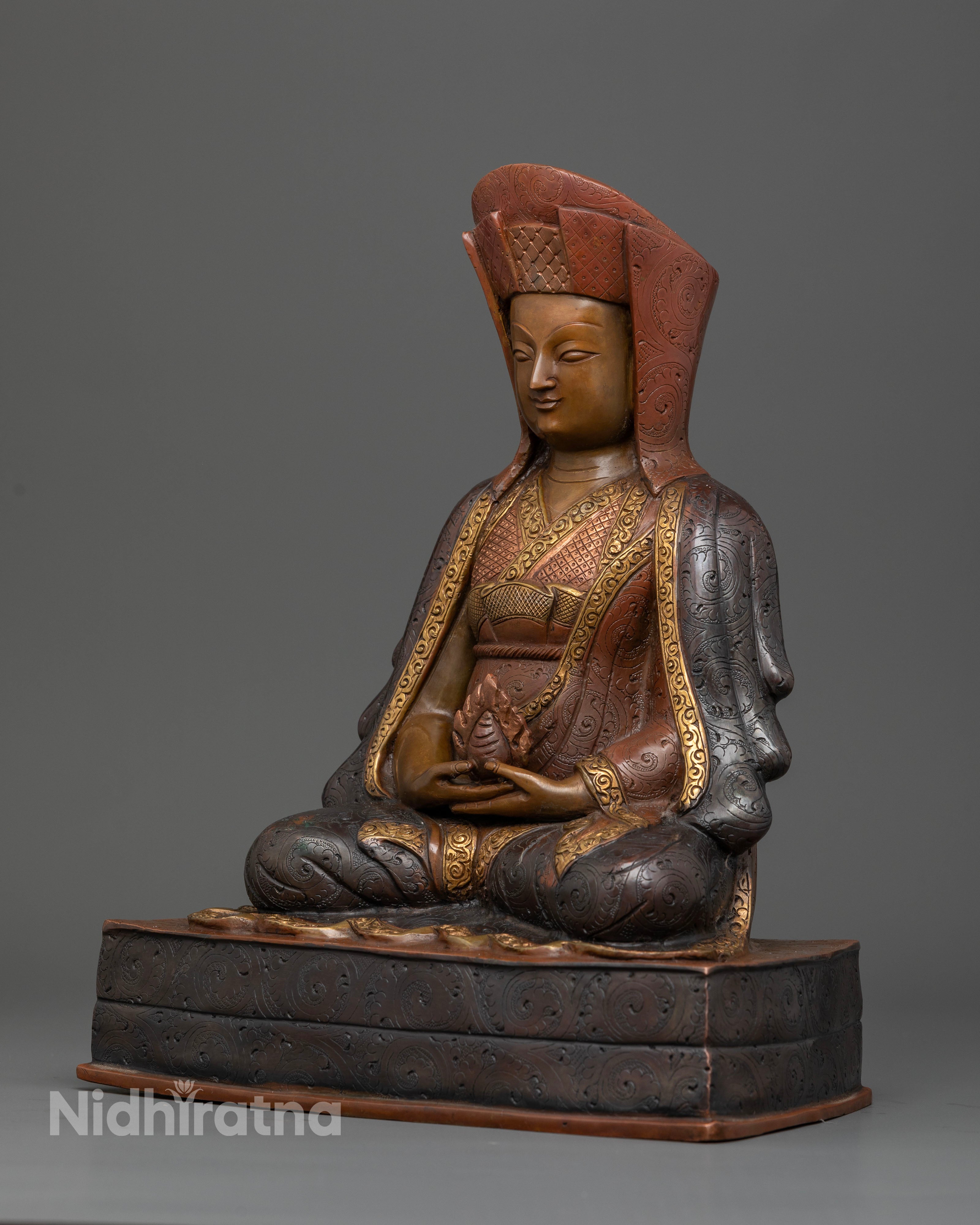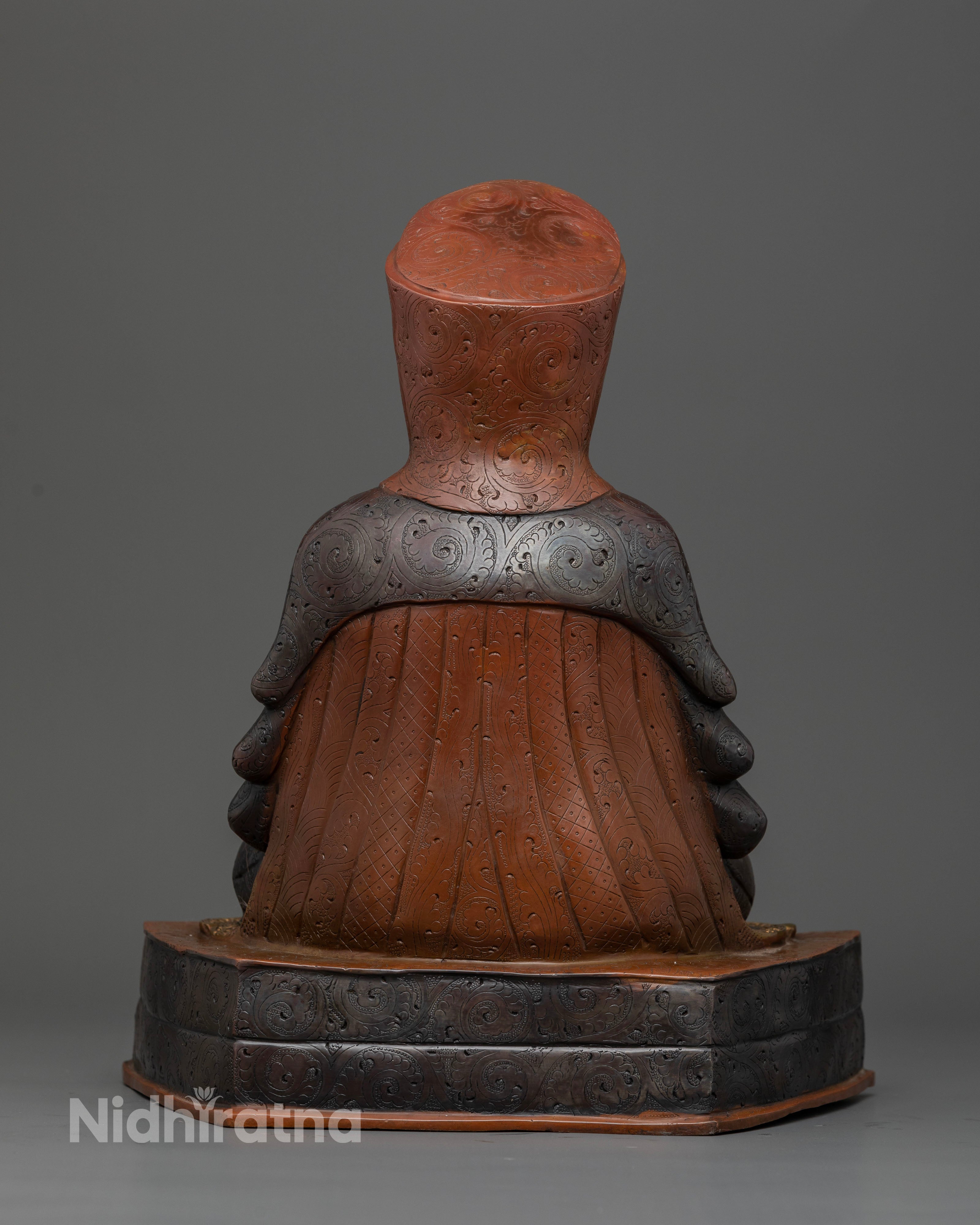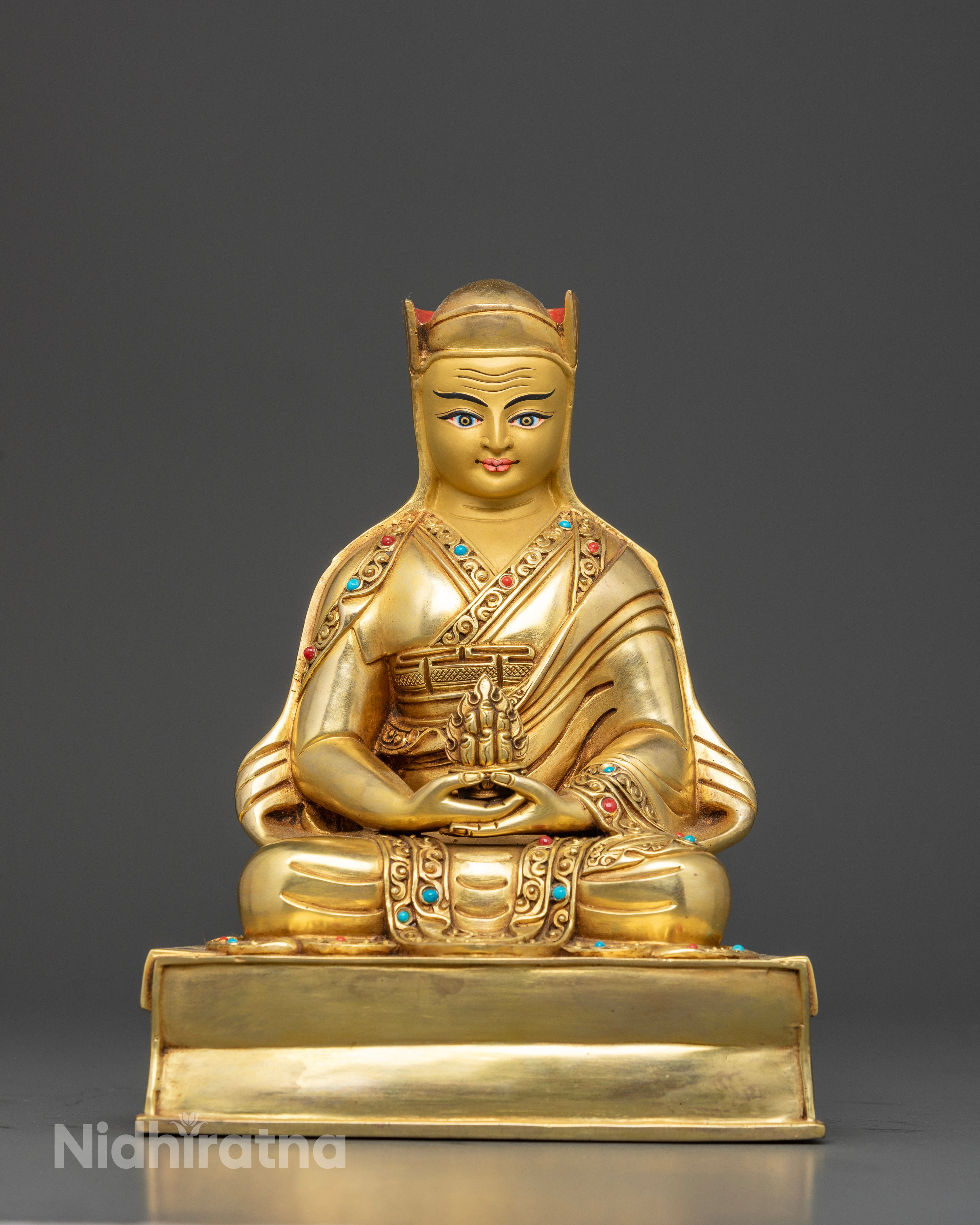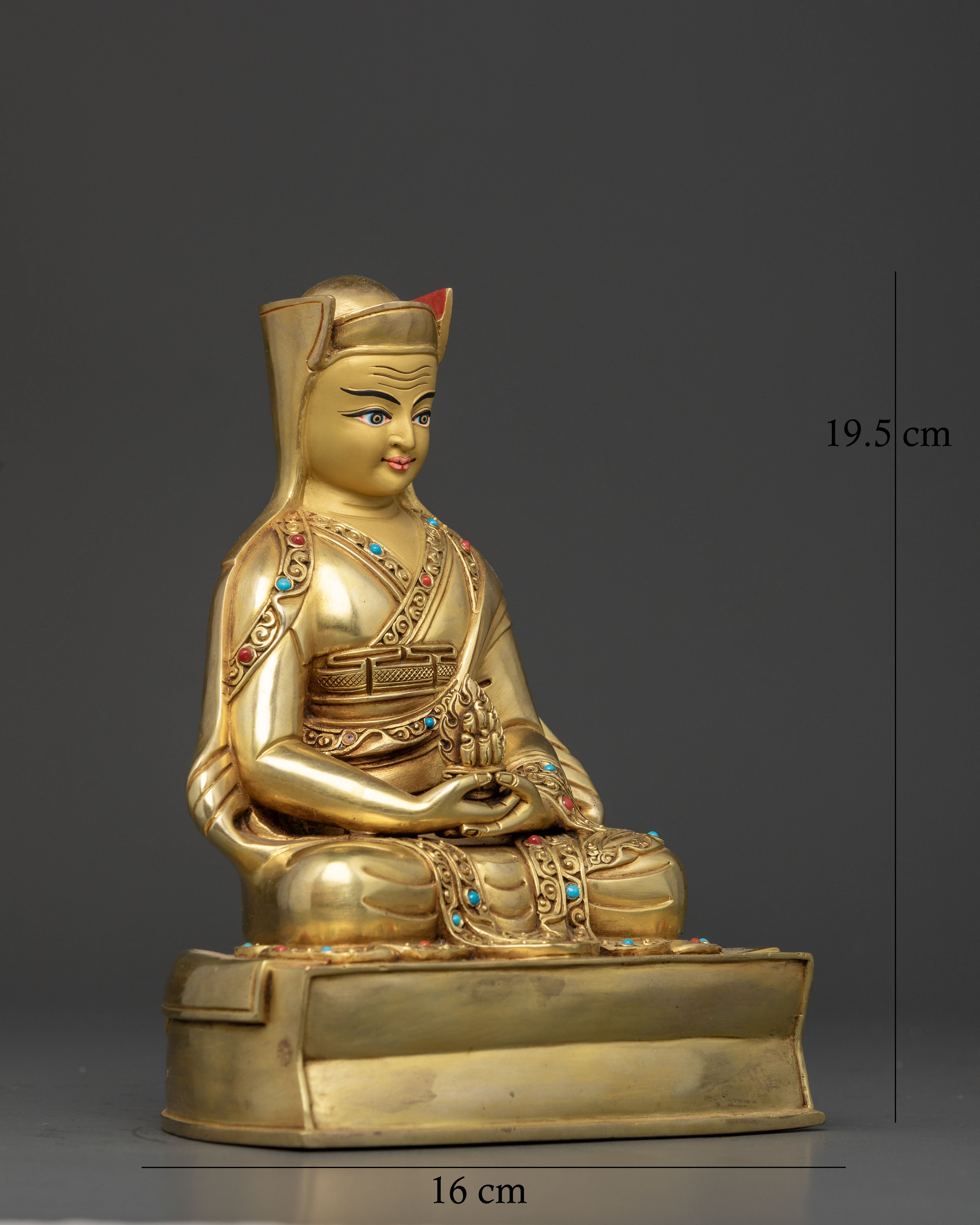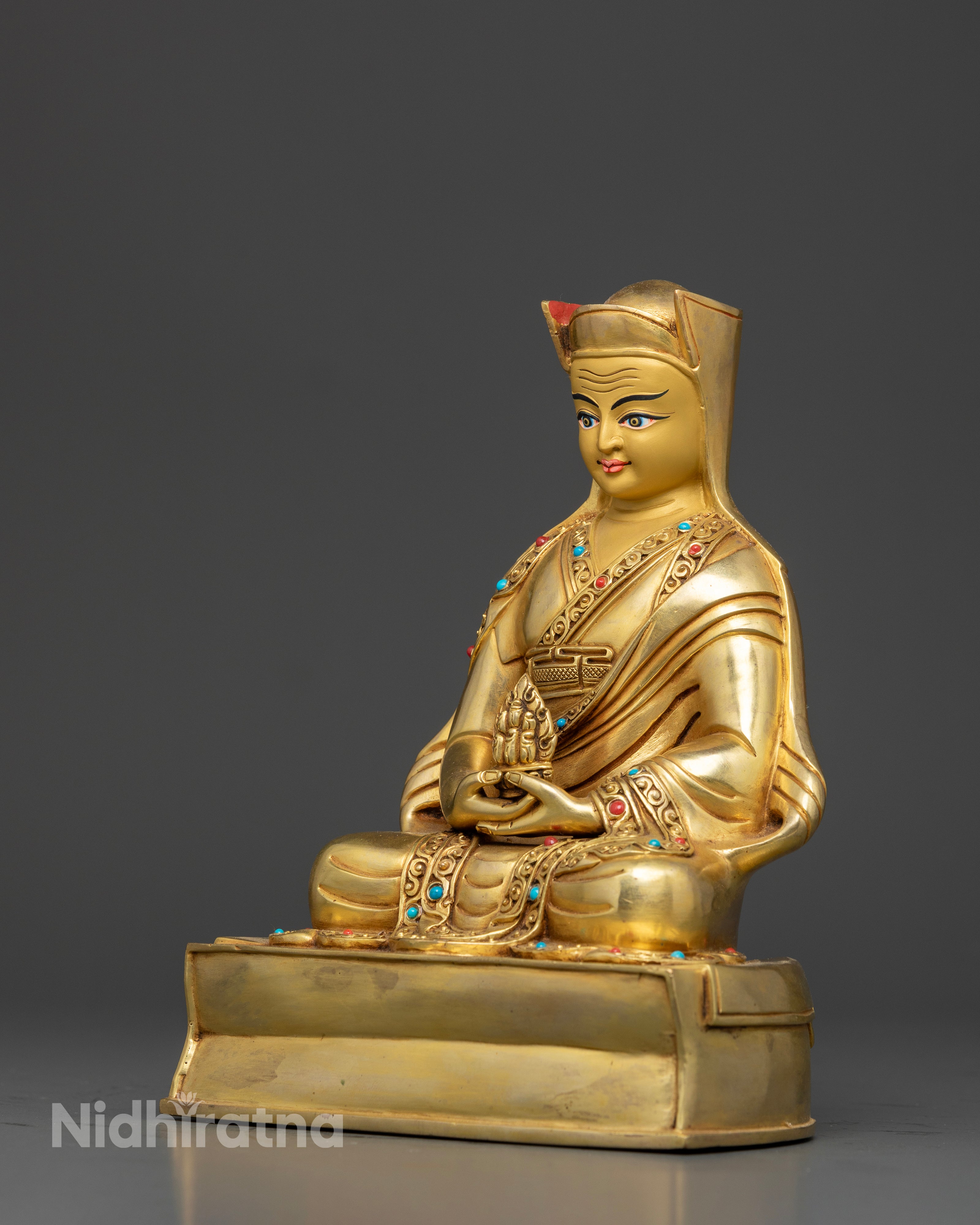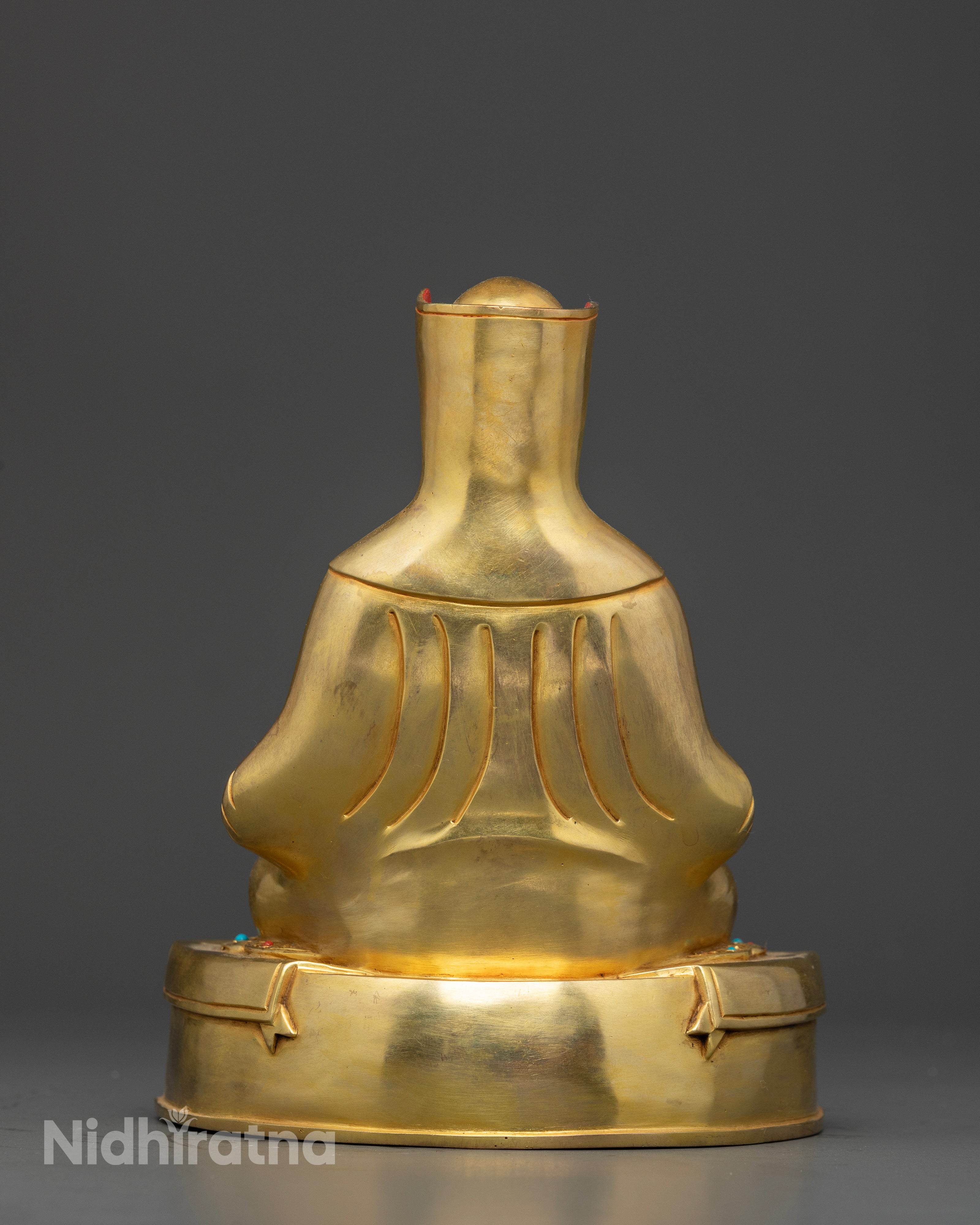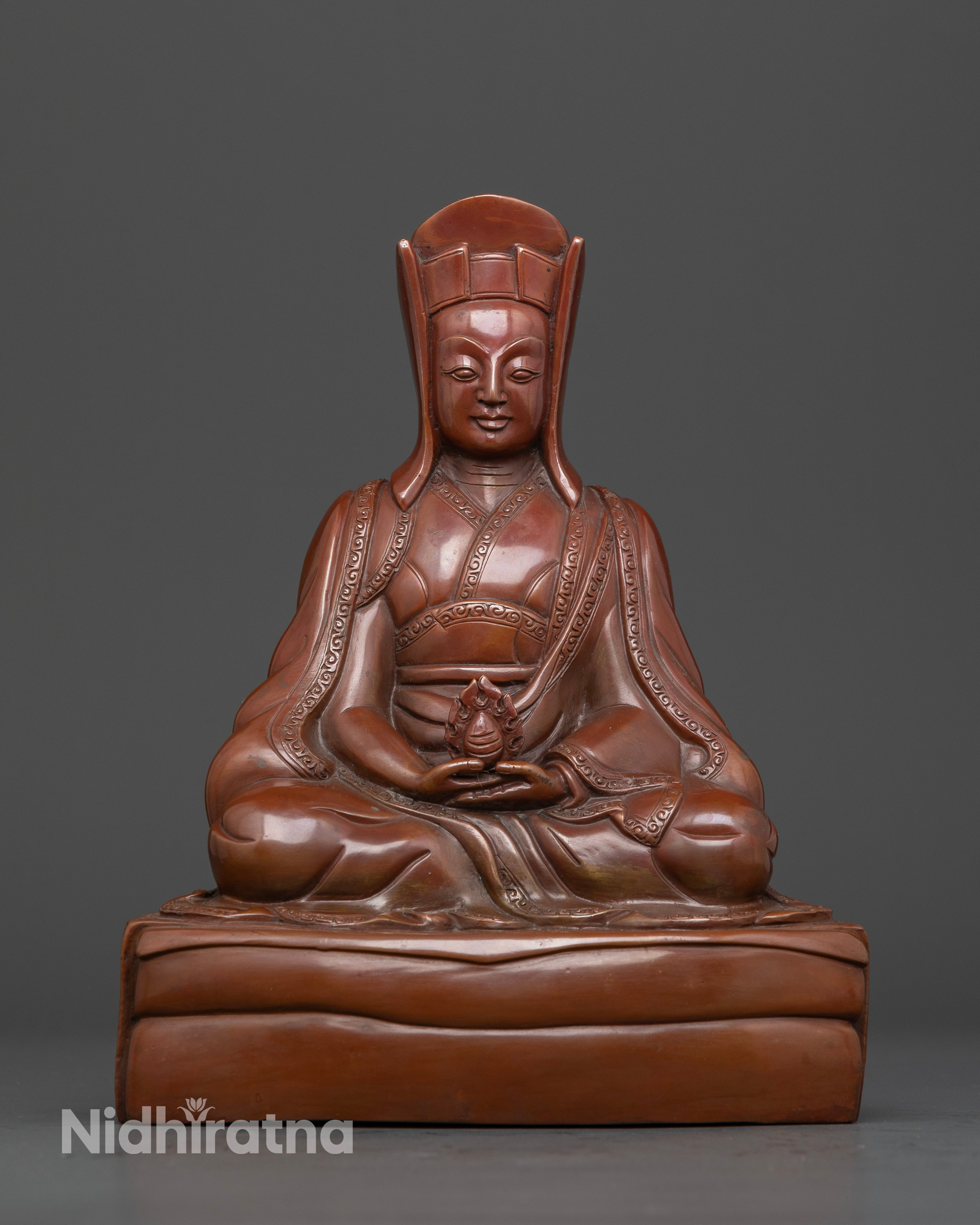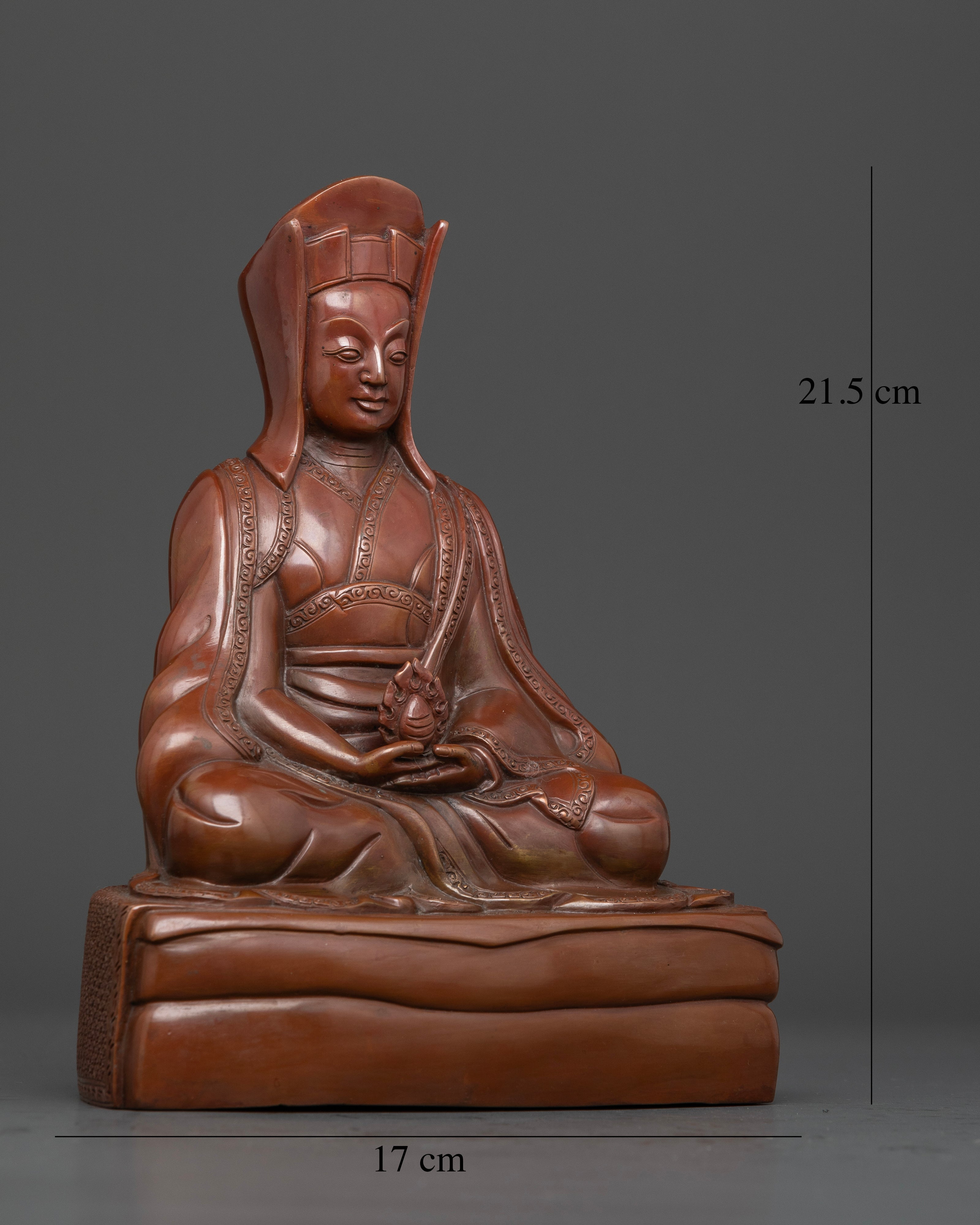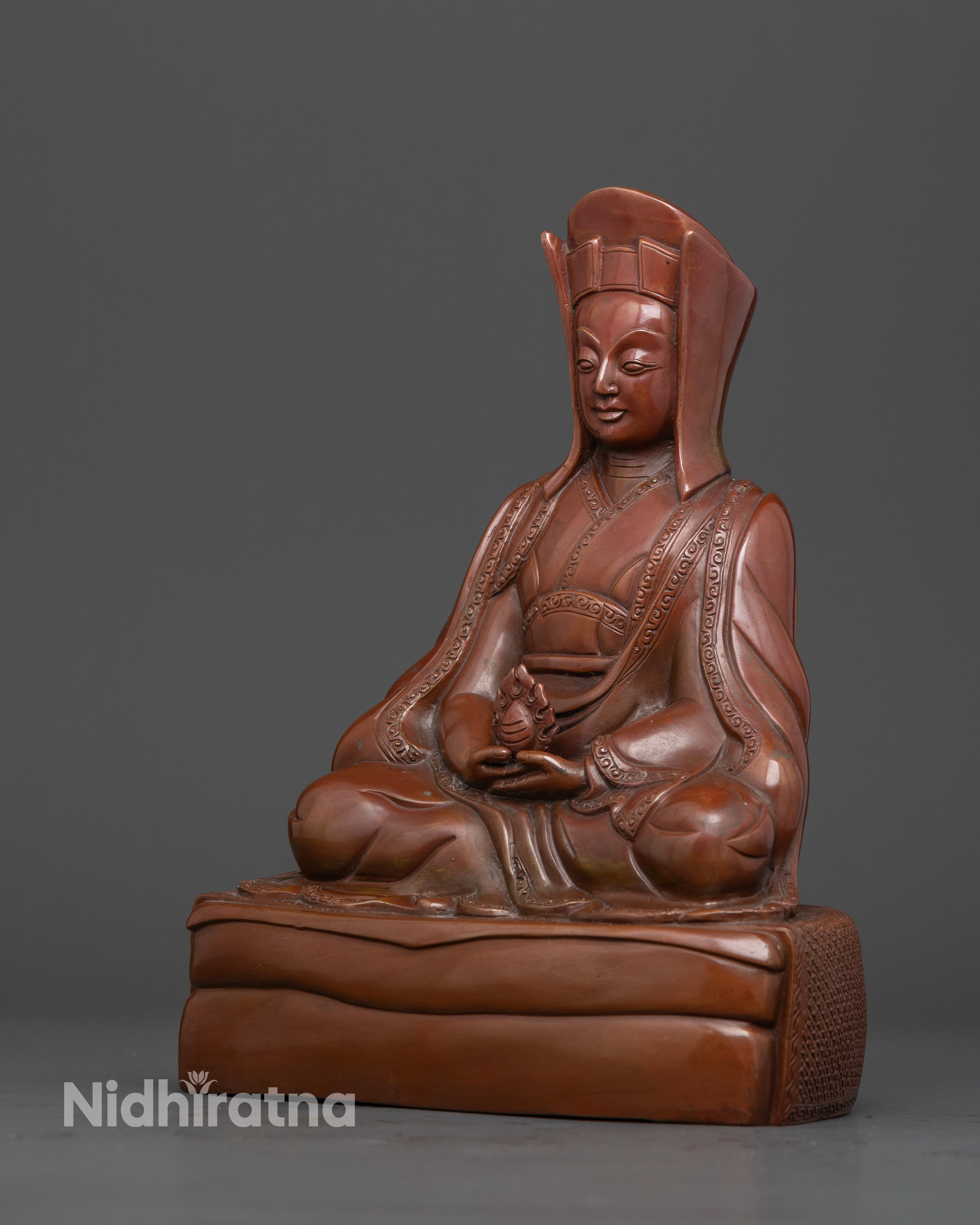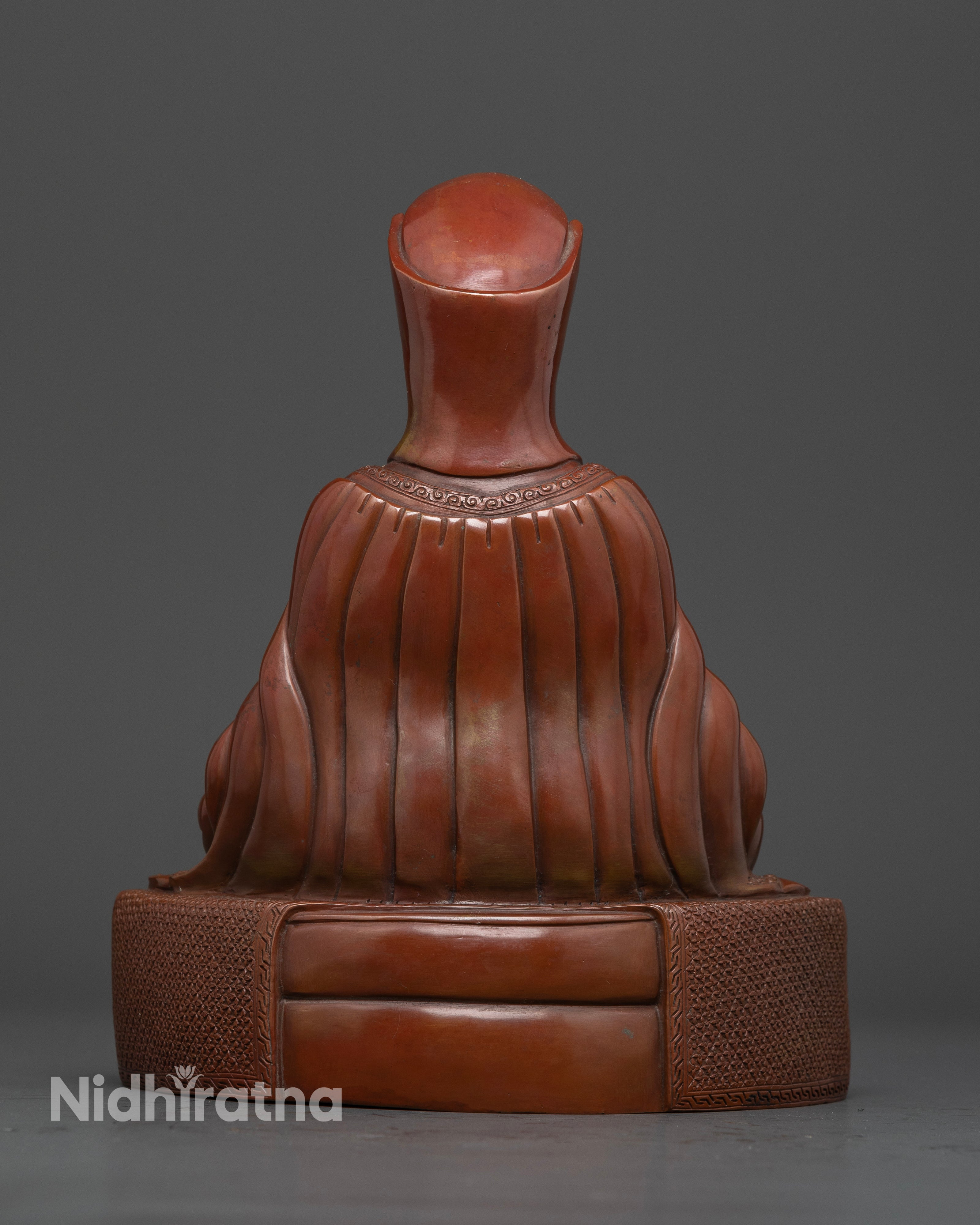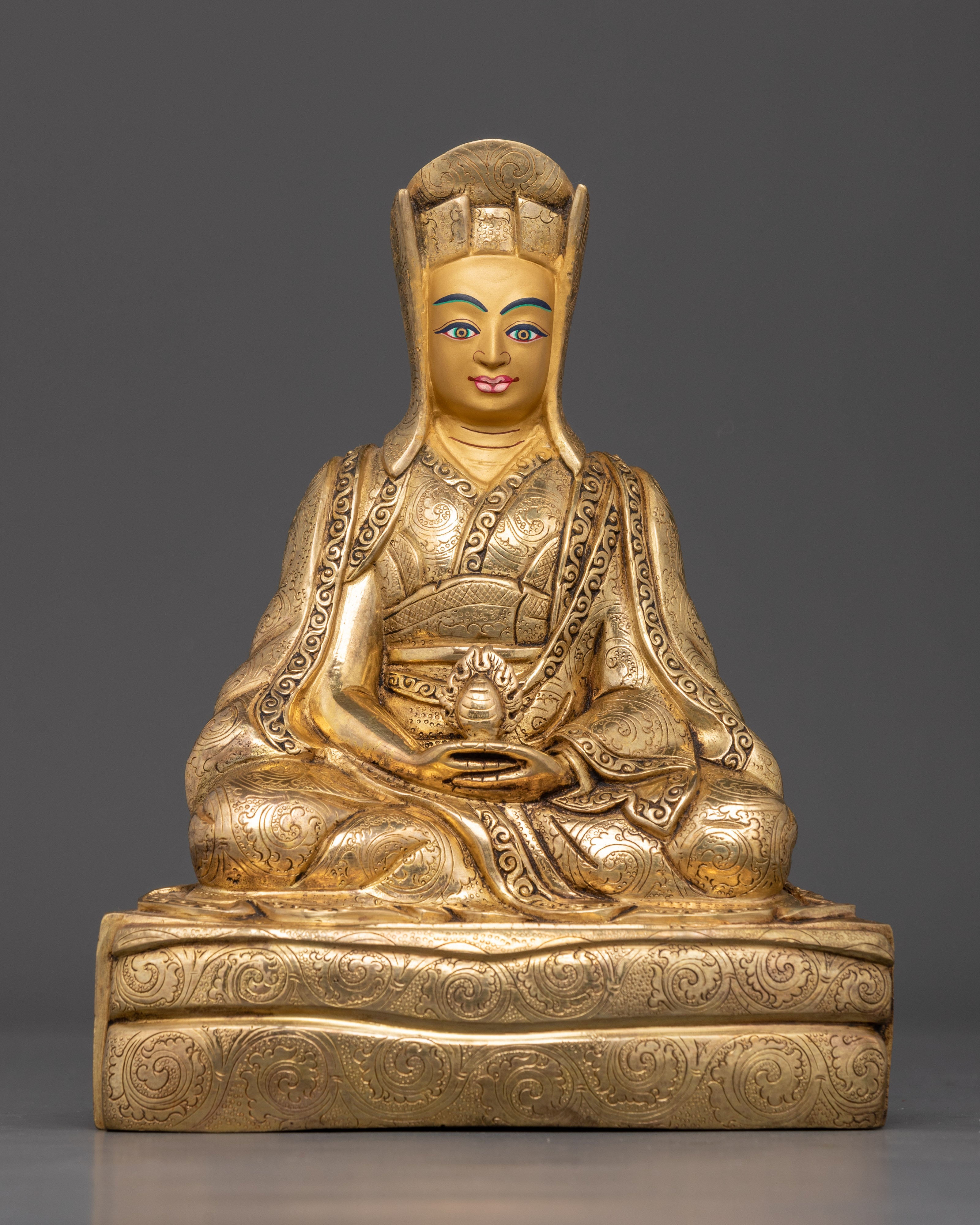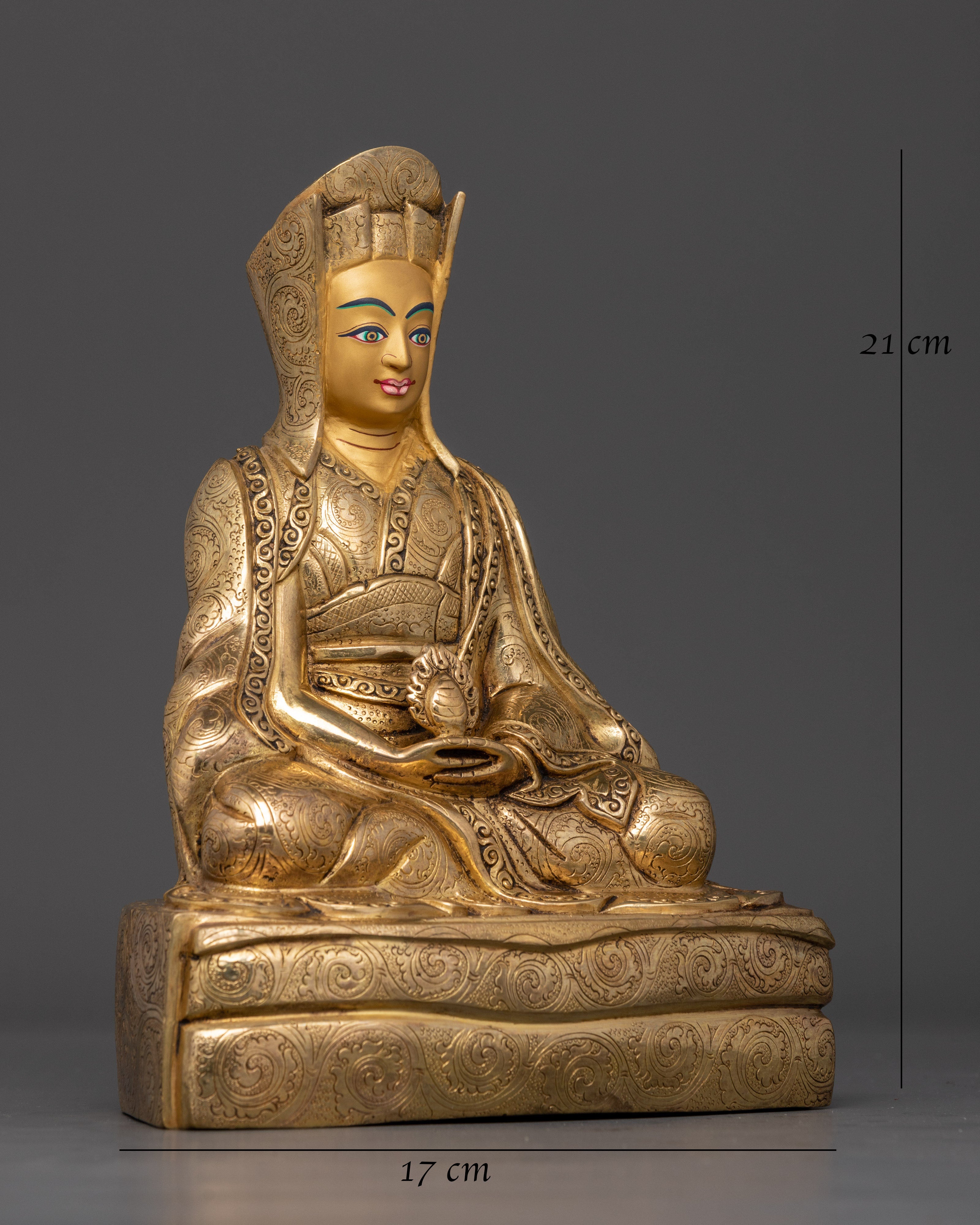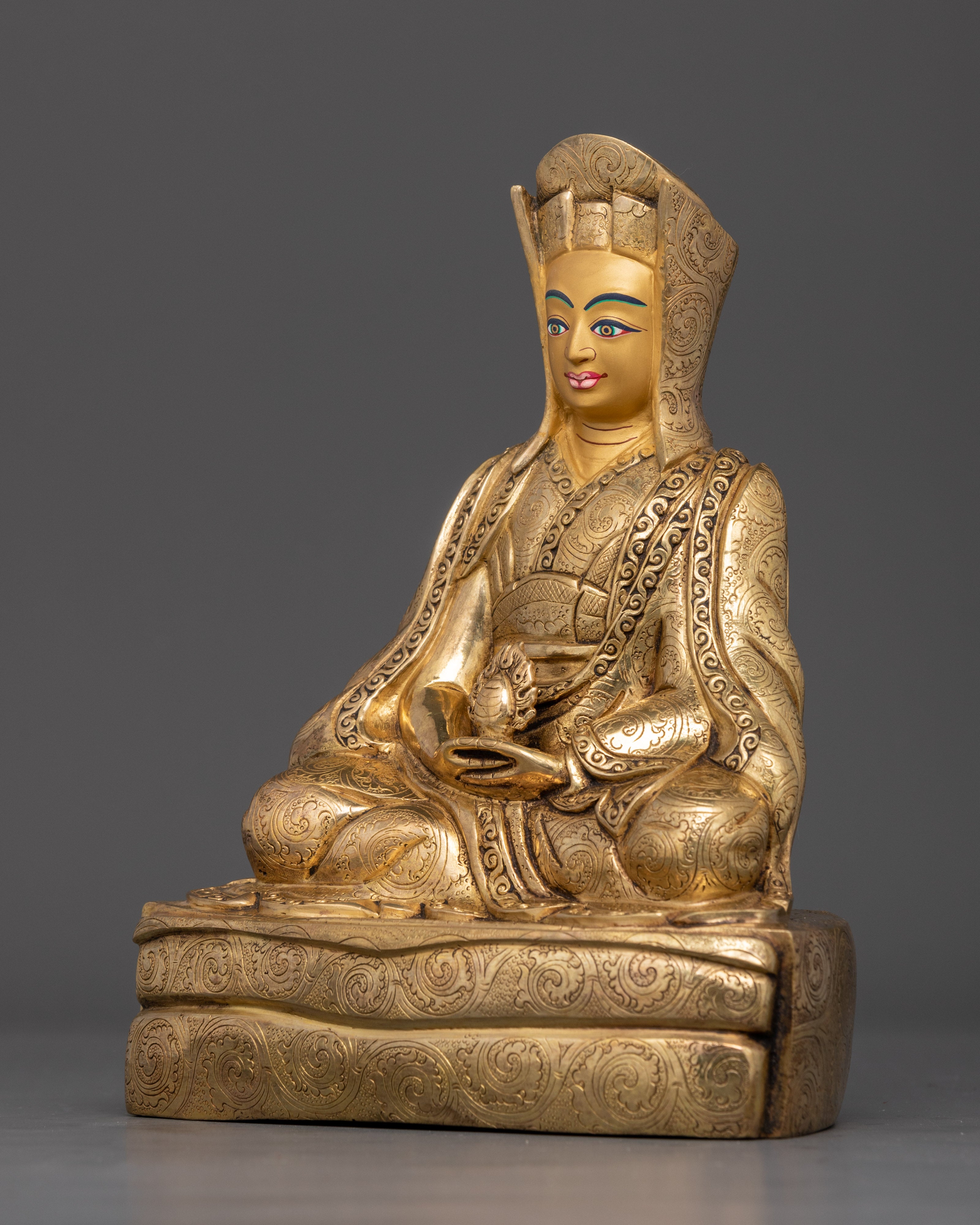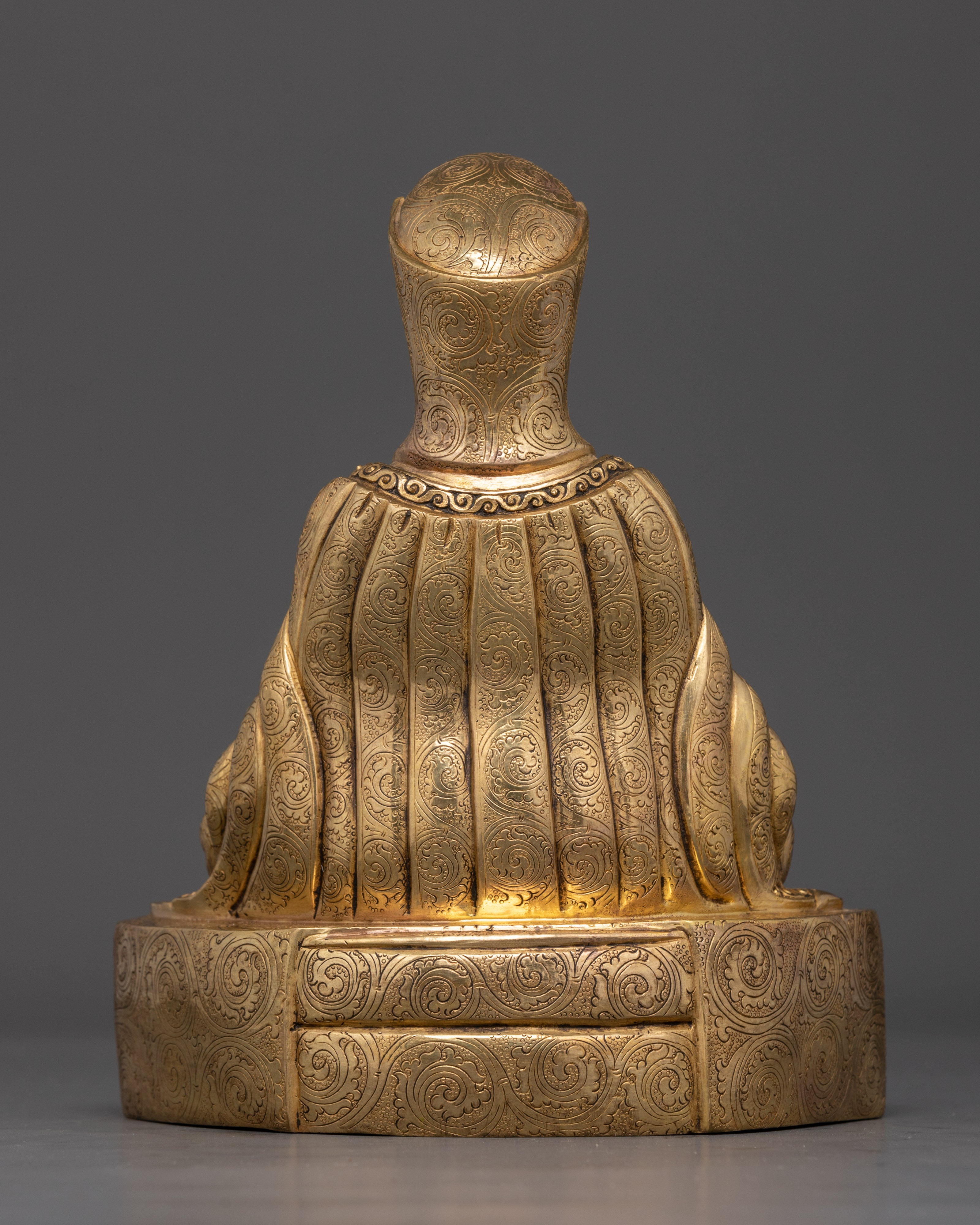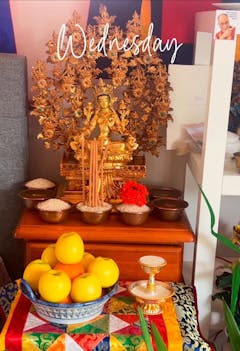Buddhist Master Gampopa Statue for Spiritual Altars | Nepalese Artwork
Handmade Lama Gampopa Statue | Traditional Buddhist Artifact
Handcrafted Gampopa Statue | Traditional Tibetan Kagyu Teacher
Machine Made Gampopa Statue | Beacon of Tibetan Wisdom
Gampopa Statue | Handcrafted Copper Sculpture
Tibetan Guru Gampopa Statue | Beautiful Handcrafted Art
Gampopa Statue: Inspiring Buddhist Artwork for Meditation
Oxidized Gampopa Statue : The Tibetan Master
Gampopa: The Pillar of Tibetan Buddhism
Gampopa in Oxidized Finish: The Timeless Sage of Tibetan Buddhism
Gampopa Statue: The Renowned Tibetan Buddhist Master and Teacher
The Gampopa statue is a revered representation of one of the most influential and beloved figures in Tibetan Buddhism. Known for his profound wisdom, compassionate heart, and dedication to the teachings of the Buddha, Gampopa (1079–1153) is considered one of the key figures in the development of the Kagyu school of Tibetan Buddhism. His life and teachings have had an enduring influence on Tibetan spiritual traditions, and his image, as captured in the form of a statue, serves as both an inspiration and a reminder of the path to enlightenment through the cultivation of wisdom, compassion, and meditation.
Crafting the Gampopa Statue
Handcrafted with deep reverence and precision, the Gampopa statue is a masterful creation that reflects the profound respect and devotion his followers have for him. The statue is typically made of high-quality bronze or copper, often gold gilded to signify his enlightened nature and the transmission of wisdom. The intricate detailing and expressions on the statue, from his serene face to the posture of his hands, are crafted by skilled artisans in Tibet and Nepal who have honed their craft through generations of dedication to sacred art.
The Gampopa statue is created with an emphasis on capturing his inner peace, wisdom, and the aura of a spiritual teacher whose life embodied the perfect integration of the teachings of the Buddha. His image serves not only as a reminder of his contributions but also as a spiritual beacon for practitioners seeking guidance on the path to enlightenment.
Appearance and Symbolism of Gampopa
In the traditional statue of Gampopa, the great master is often depicted seated in a meditative posture, embodying his deep practice of meditation and mindfulness. His hands are usually shown in the Dhyana Mudra (gesture of meditation), with the left hand resting in his lap and the right hand resting gently on top of the left. This hand gesture signifies his devotion to meditation, the foundation of his teachings, and the path of enlightenment.
His serene expression, with eyes gently closed or open in a focused gaze, reflects Gampopa’s inner peace and unwavering focus on the Dharma. The face is often characterized by a gentle smile, symbolizing his compassionate nature and his love for all beings, no matter their station or circumstance. His gaze, though peaceful, conveys a sense of wisdom and discernment, reflecting the clarity of his teachings and the guidance he offered to countless students throughout his life.
Gampopa is often depicted wearing the traditional robes of a Buddhist monk, symbolizing his renunciation of worldly attachments and his dedication to the life of a spiritual practitioner. The robes are typically intricately detailed, highlighting the master’s humility, simplicity, and complete devotion to his spiritual mission. His attire represents the monastic path—the path of discipline, meditation, and wisdom.
One of the most defining features of a Gampopa statue is the crown or headgear, which is typically adorned with the traditional Kagyu crown, symbolizing his position as a master of the Kagyu lineage. The crown is a symbol of the transmission of the lineage’s teachings and wisdom, and it also signifies the spiritual authority Gampopa held as a key teacher in the development of Tibetan Buddhism.
The Teachings and Legacy of Gampopa
Gampopa’s teachings combined the profound philosophical insights of the Kadampa tradition with the experiential practices of Mahamudra and Dzogchen, leading to the development of the Kagyu school. As a student of Milarepa, Gampopa integrated the oral traditions of Milarepa’s teachings on meditation, as well as the wisdom and practices of his earlier training under the renowned Kadampa master Atisha. He is most widely remembered for the transmission of Mahamudra, the "Great Seal," which is a profound meditation practice that leads to the direct realization of the nature of the mind.
Mahamudra, which Gampopa emphasized, is often depicted in his teachings as a form of non-dual awareness, focusing on the cultivation of clear seeing and the practice of non-conceptual meditation. In addition to Mahamudra, Gampopa is known for his teachings on Lojong, the training of the mind, and the importance of compassionate action (Bodhicitta) in all aspects of one’s life.
Gampopa’s teachings provided the foundation for what became known as the "Four Dharmas of Gampopa", four key practices that were central to his approach to spiritual development:
-
The Dharma of Refuge: Developing an unwavering commitment to the teachings of the Buddha.
-
The Dharma of Bodhicitta: Cultivating the wish to attain enlightenment for the benefit of all sentient beings.
-
The Dharma of Emptiness: Realizing the ultimate nature of reality, free from attachment and dualistic thinking.
- The Dharma of Meditation: Cultivating profound, direct experiences of the nature of mind through meditation.
Gampopa's vast teachings and his ability to synthesize these practices into a coherent path to enlightenment had an immense influence on the development of Tibetan Buddhism. His legacy continues to be a guiding light for practitioners of the Kagyu tradition, and his teachings are still studied and practiced by students worldwide.
The Symbolism of Gampopa's Attributes
-
Meditative Posture (Dhyana Mudra): The posture of Gampopa in meditation symbolizes his commitment to mindful practice and mental clarity. This stance encourages practitioners to remain focused on their meditation practice and to seek inner peace through stillness and contemplation.
-
Serene Expression: The gentle smile and peaceful demeanor of Gampopa’s statue symbolize his compassionate nature and wisdom. His image serves as an inspiration for practitioners to cultivate calmness and clarity in their own spiritual practice.
-
Kagyu Crown: The Kagyu crown worn by Gampopa represents his position as a master of the Kagyu lineage and his authority in teaching the profound teachings of Mahamudra and Dzogchen. The crown symbolizes the transmission of the teachings and the spiritual lineage.
- Monastic Robes: The robes of Gampopa represent his renunciation of worldly desires and his commitment to a life of simplicity, discipline, and spiritual focus. His attire is a symbol of his monastic training and his dedication to the path of Buddhist monasticism.
Conclusion
The Gampopa statue is a powerful spiritual icon, representing the profound wisdom, compassion, and dedication of one of the greatest Buddhist teachers in history. As the founder of the Kagyu lineage, Gampopa’s teachings have shaped the spiritual practices of countless individuals, offering them a clear path to enlightenment through meditation, compassion, and wisdom. His statue serves as a reminder of the spiritual potential within all beings and the path to liberation that is accessible through disciplined practice, meditation, and a compassionate heart. For practitioners of the Kagyu tradition and beyond, the image of Gampopa continues to inspire and guide on the journey toward enlightenment.

